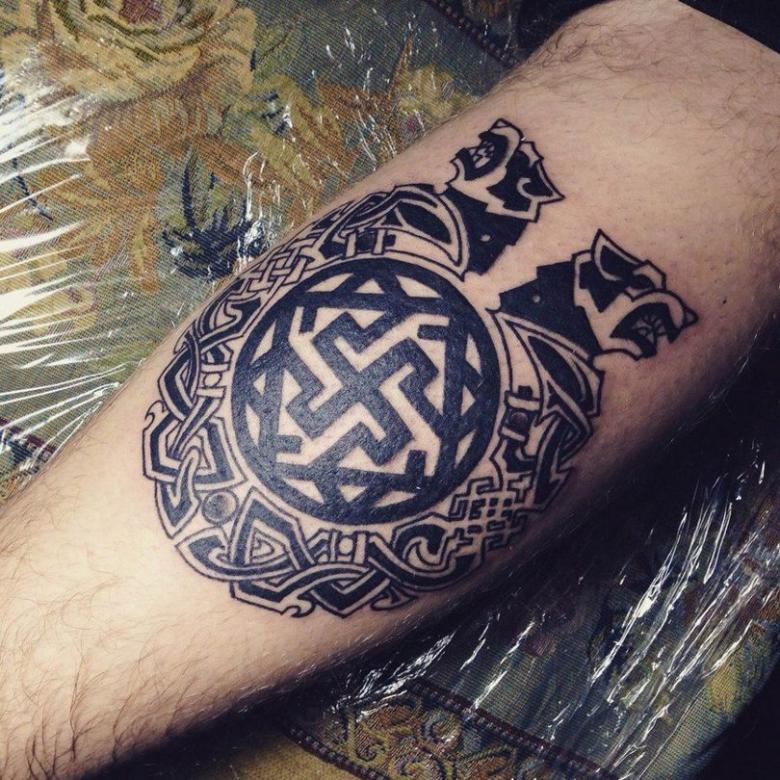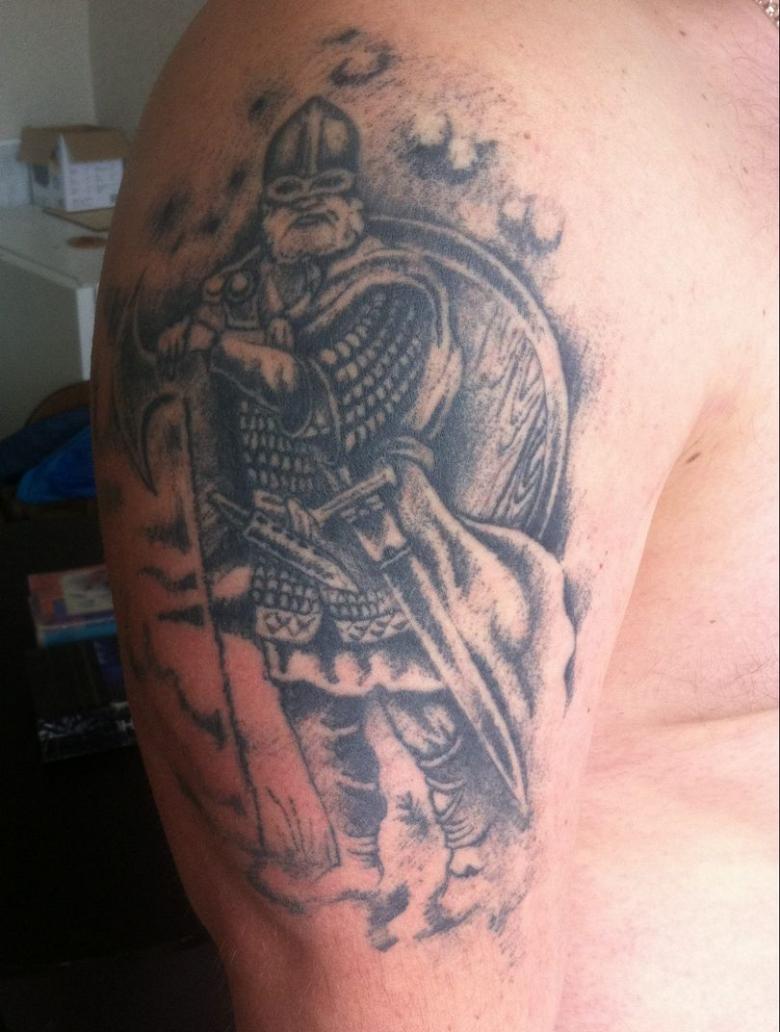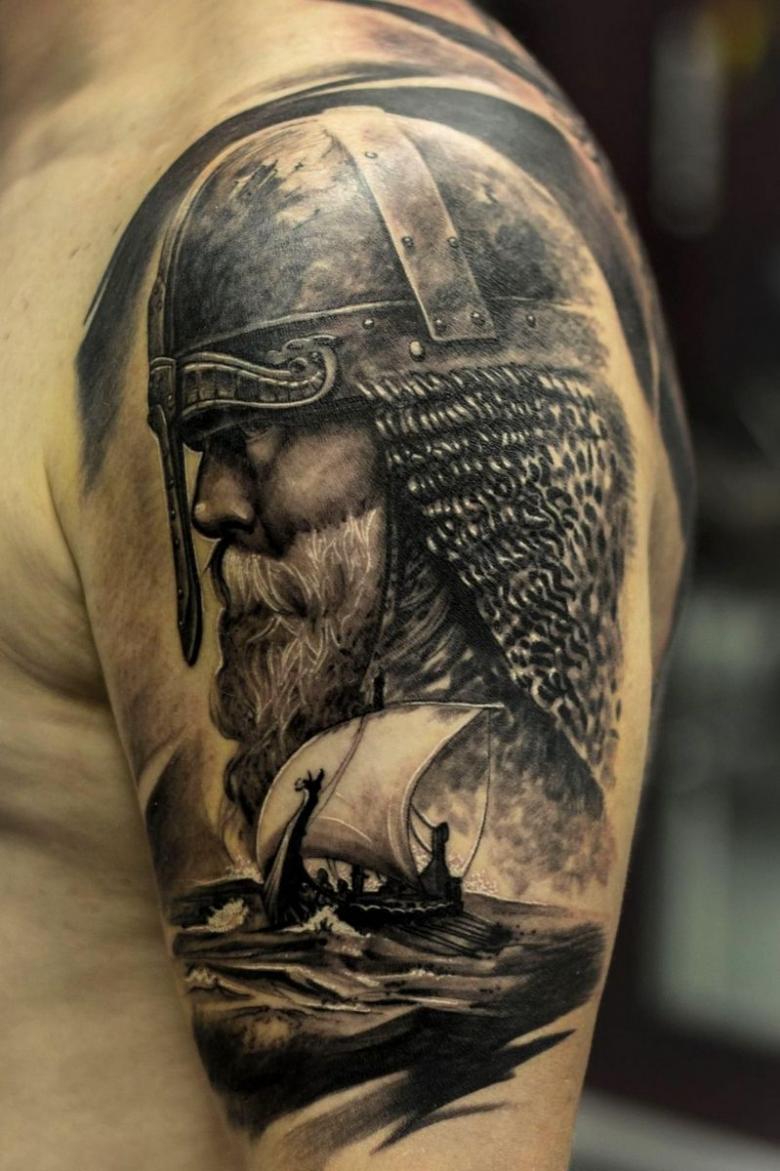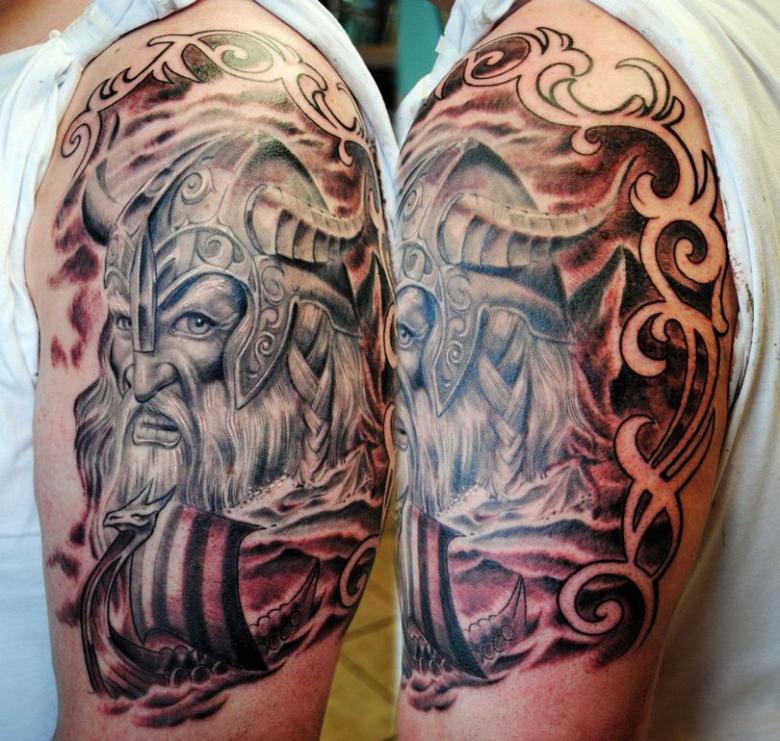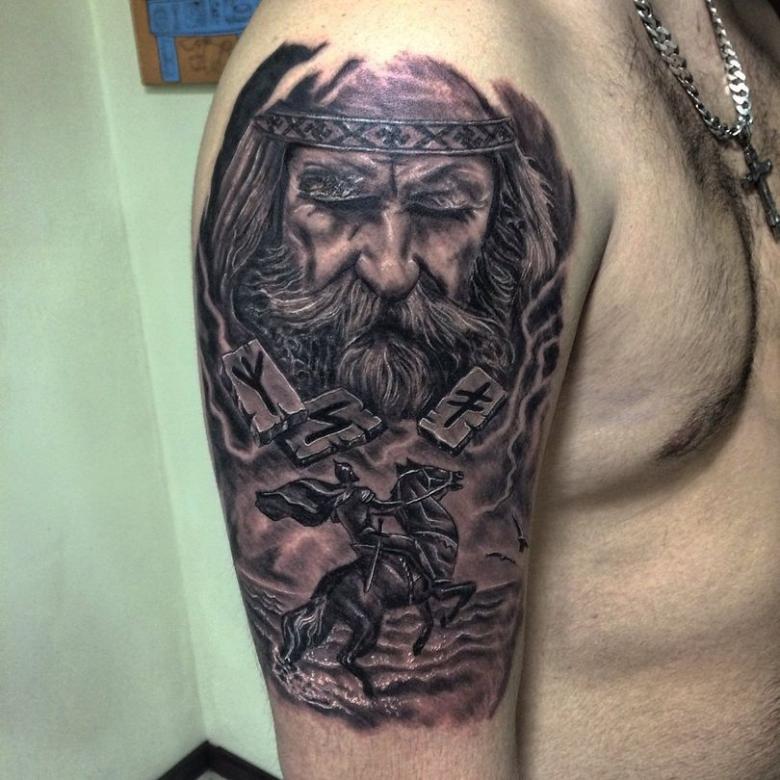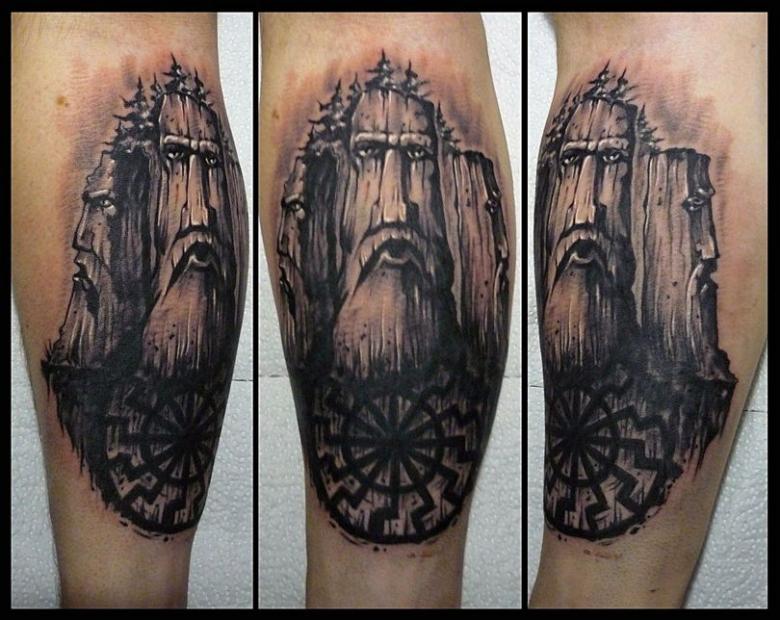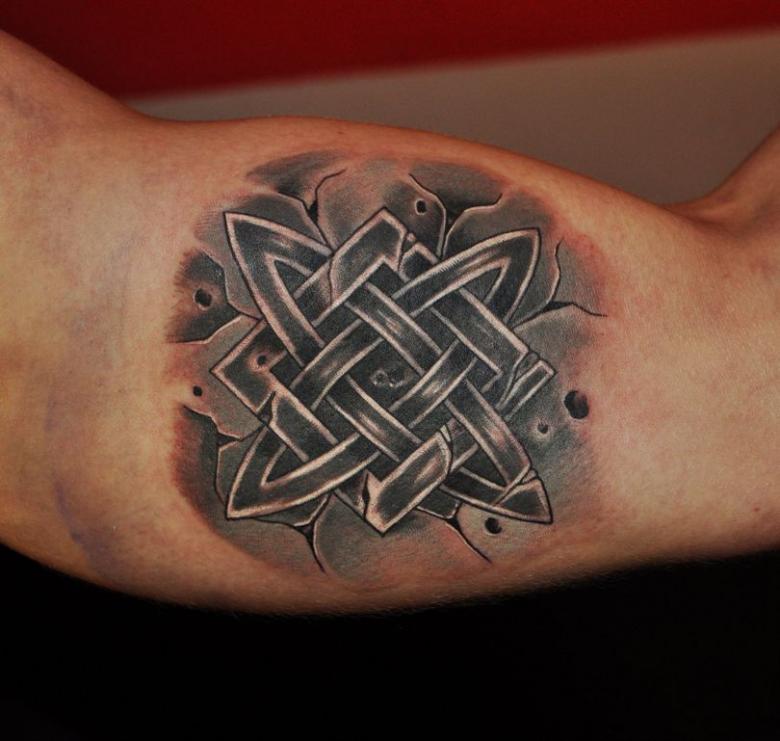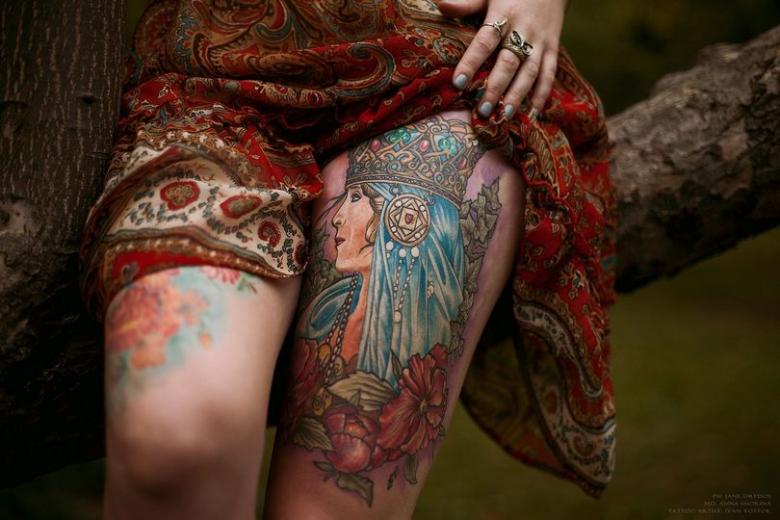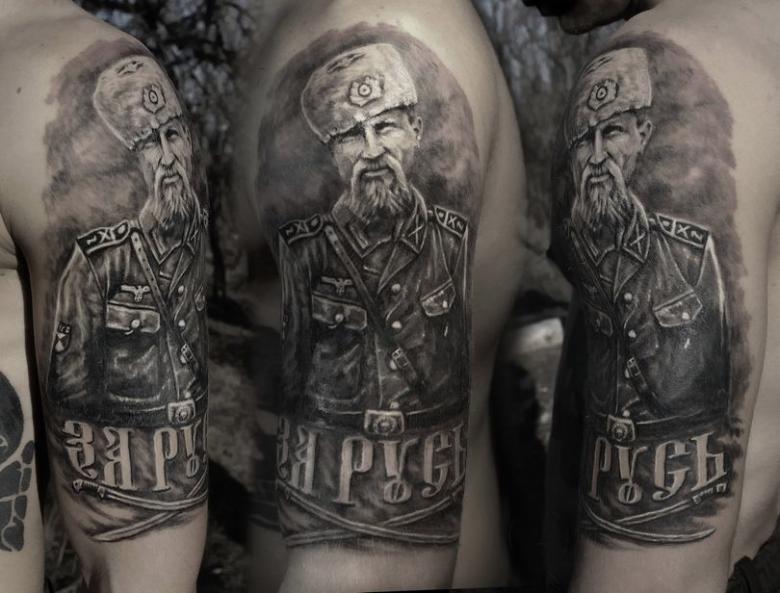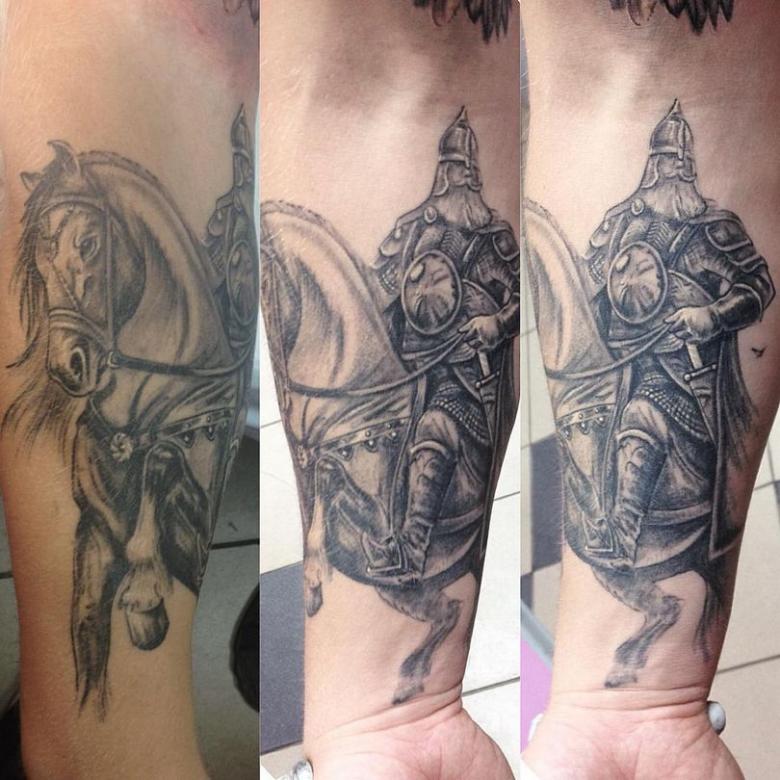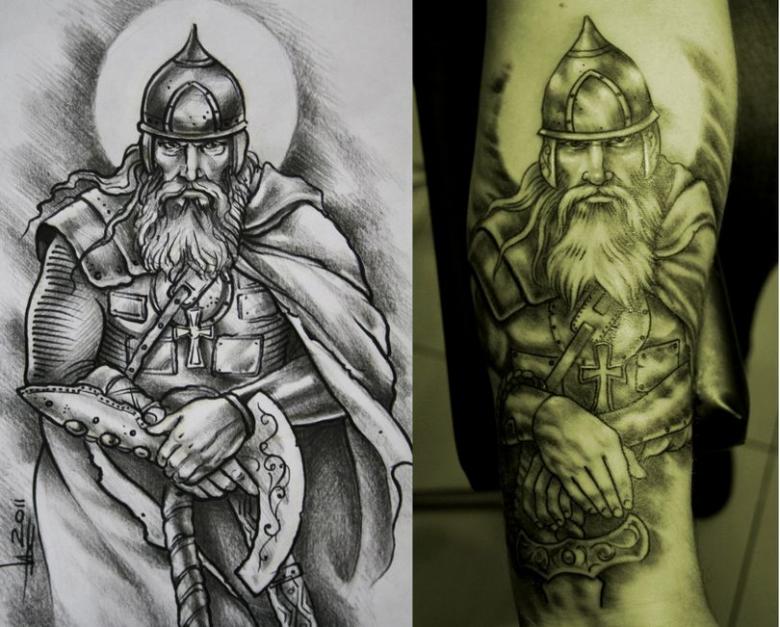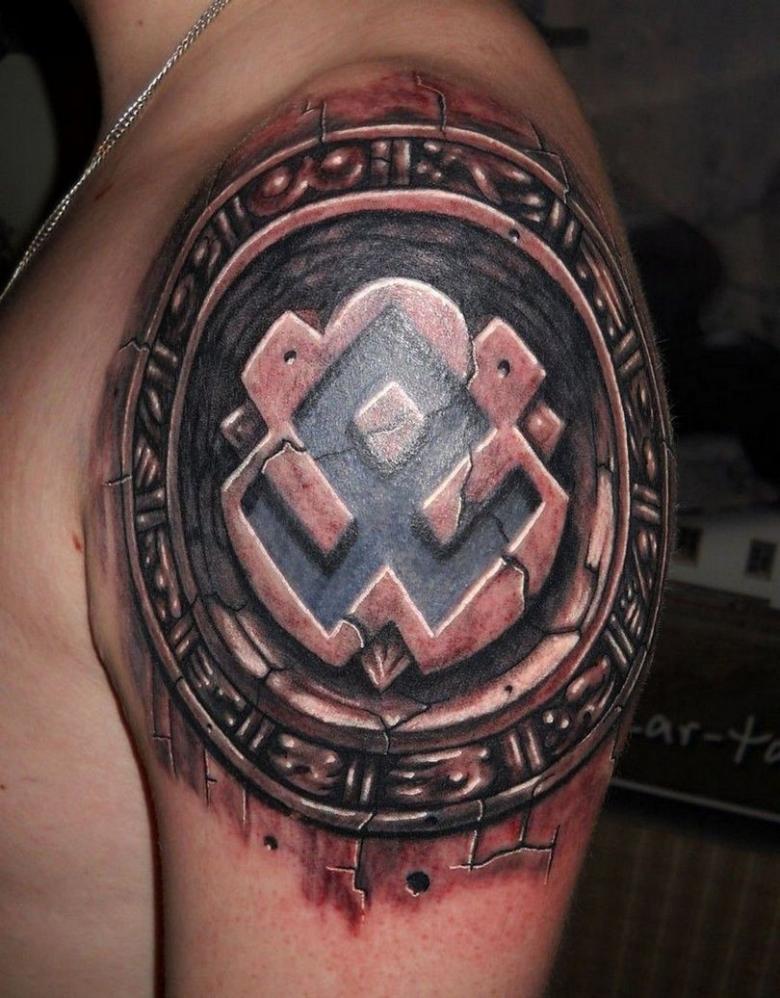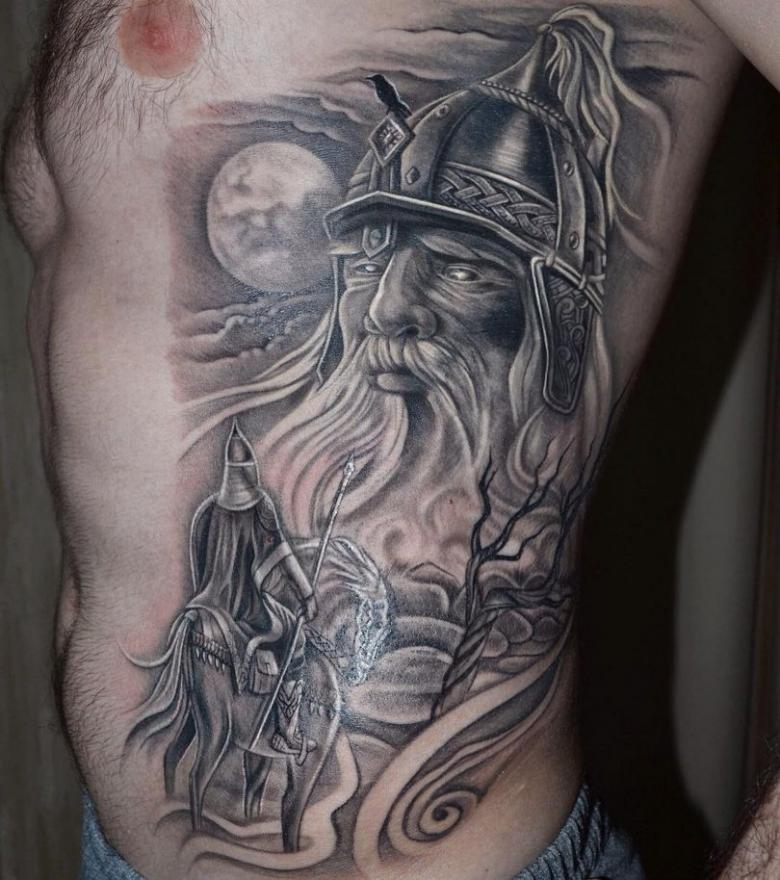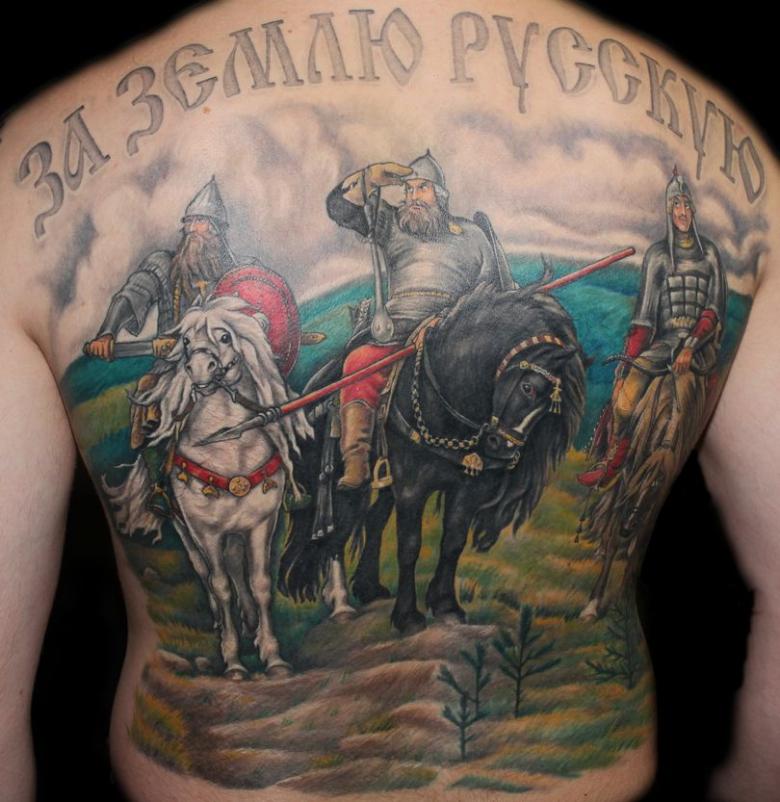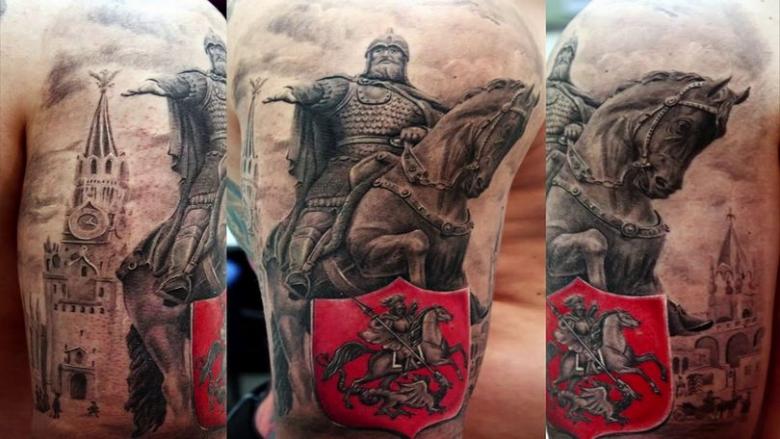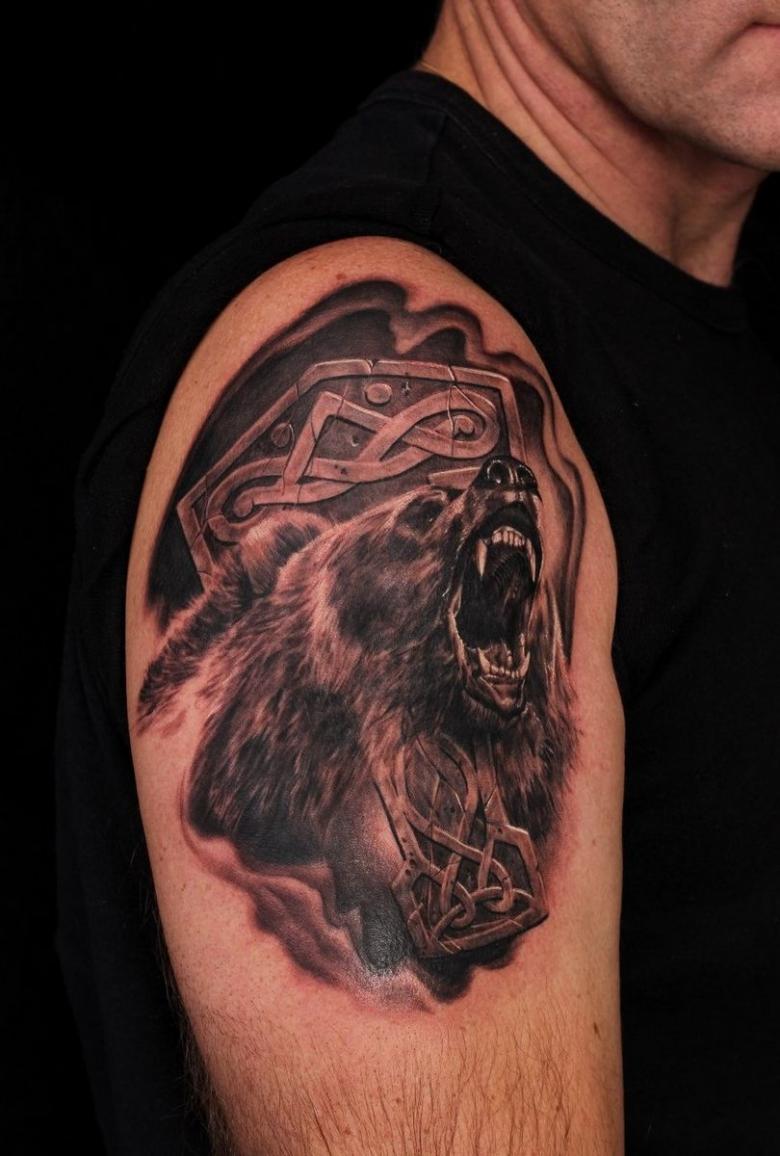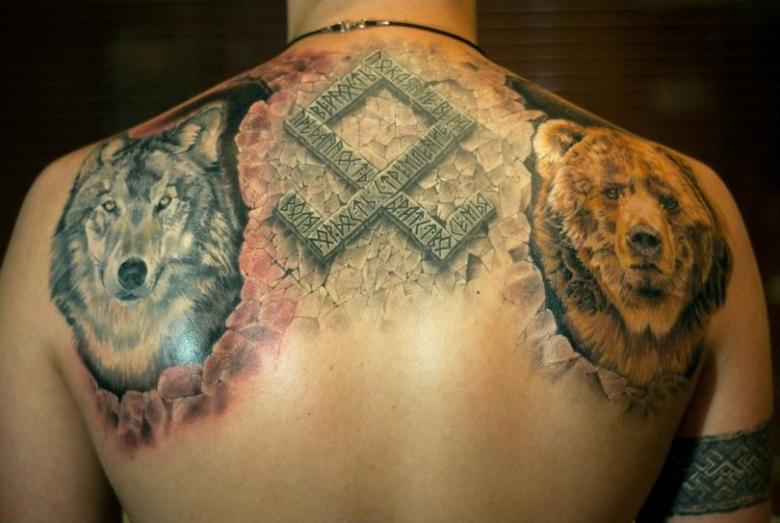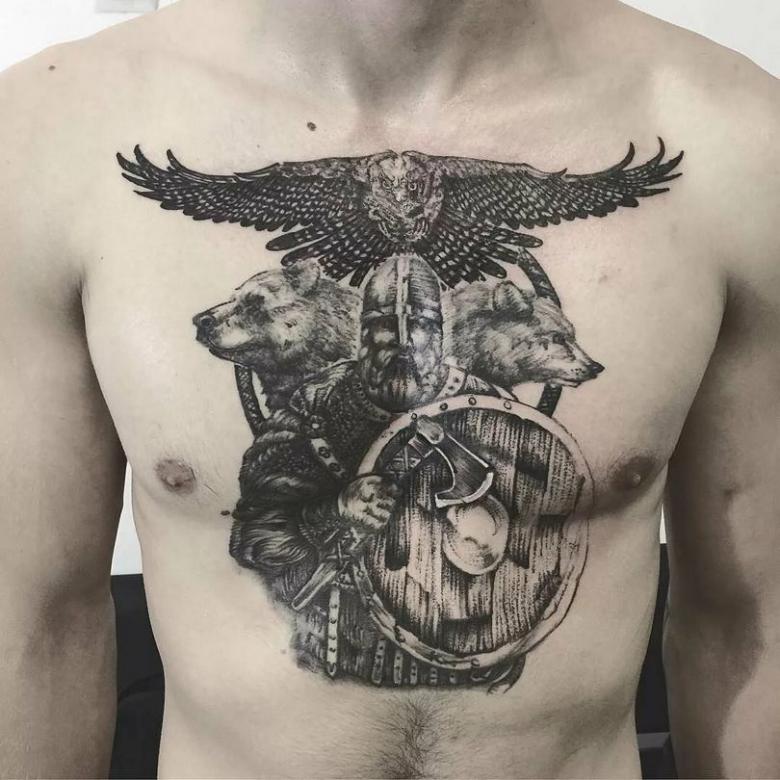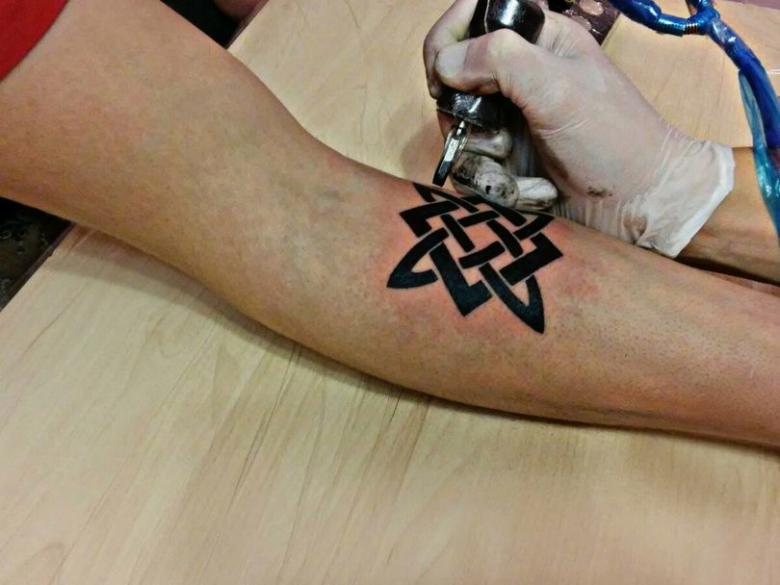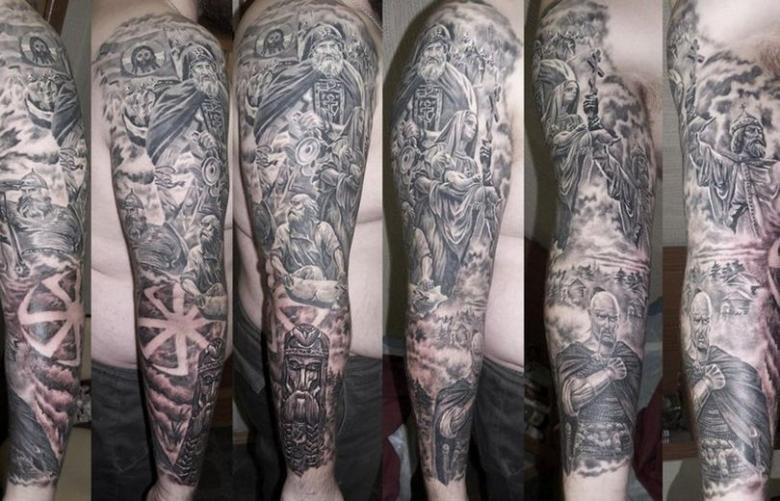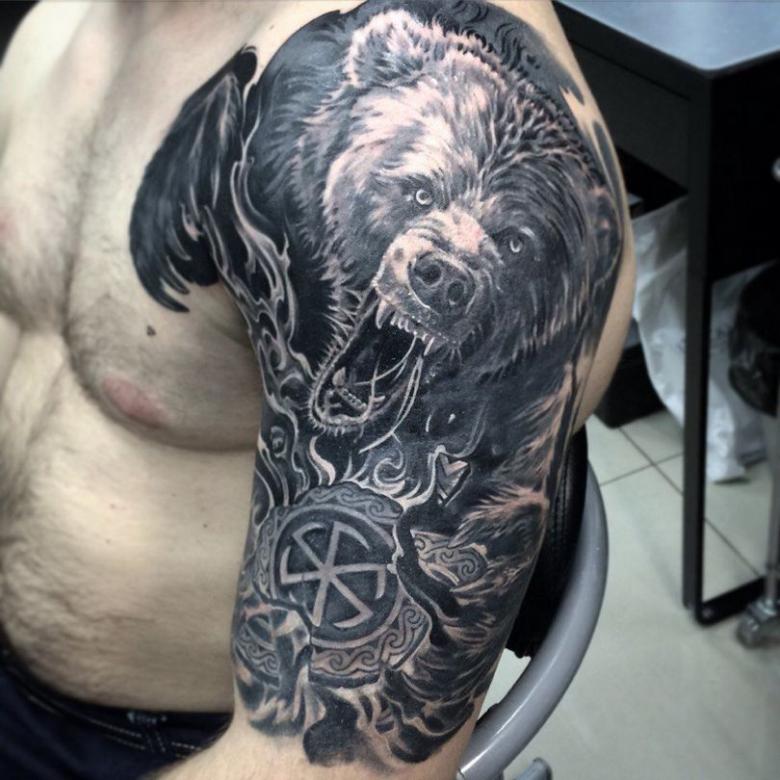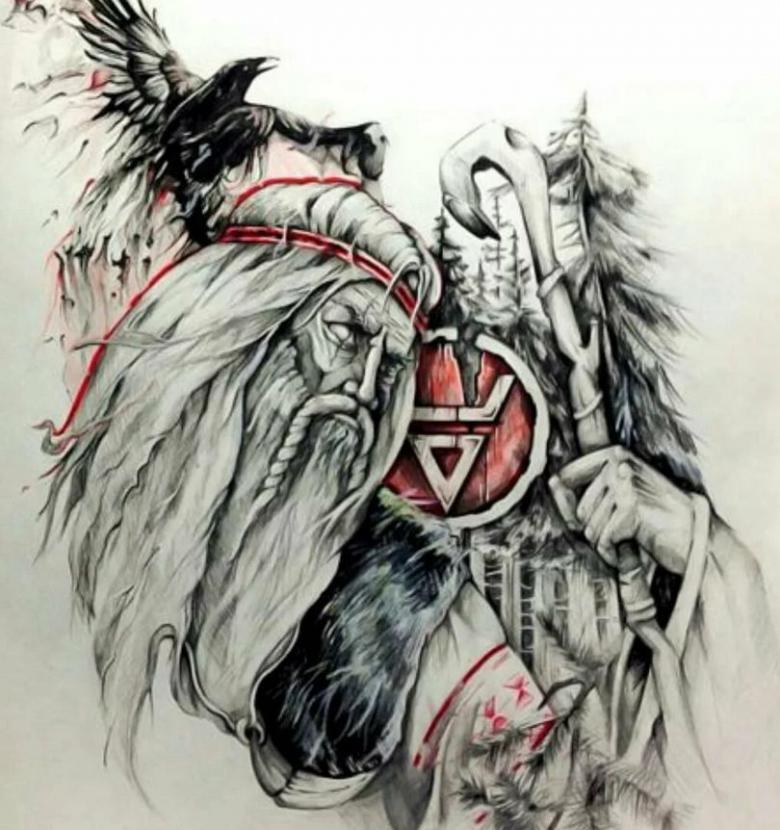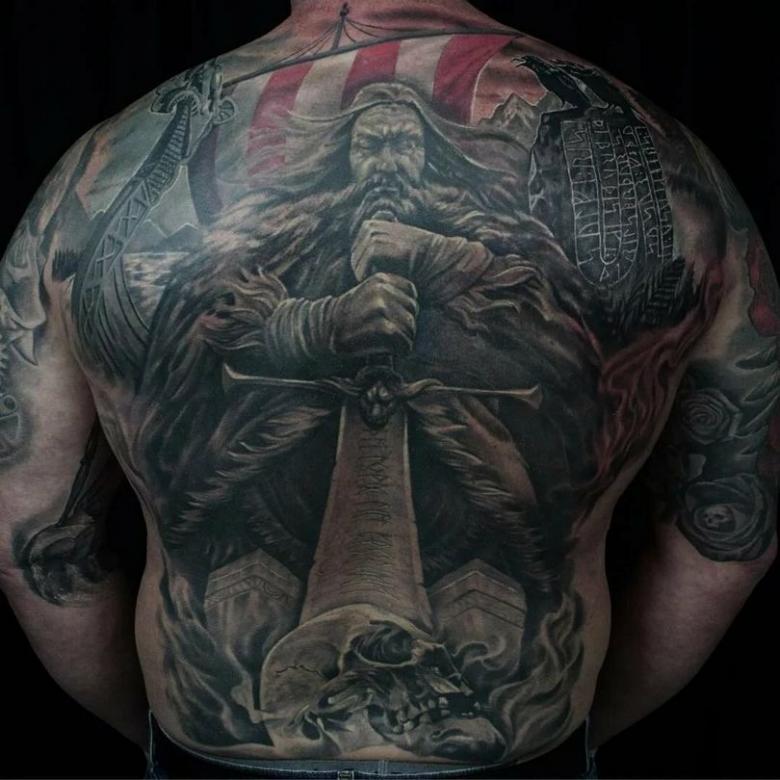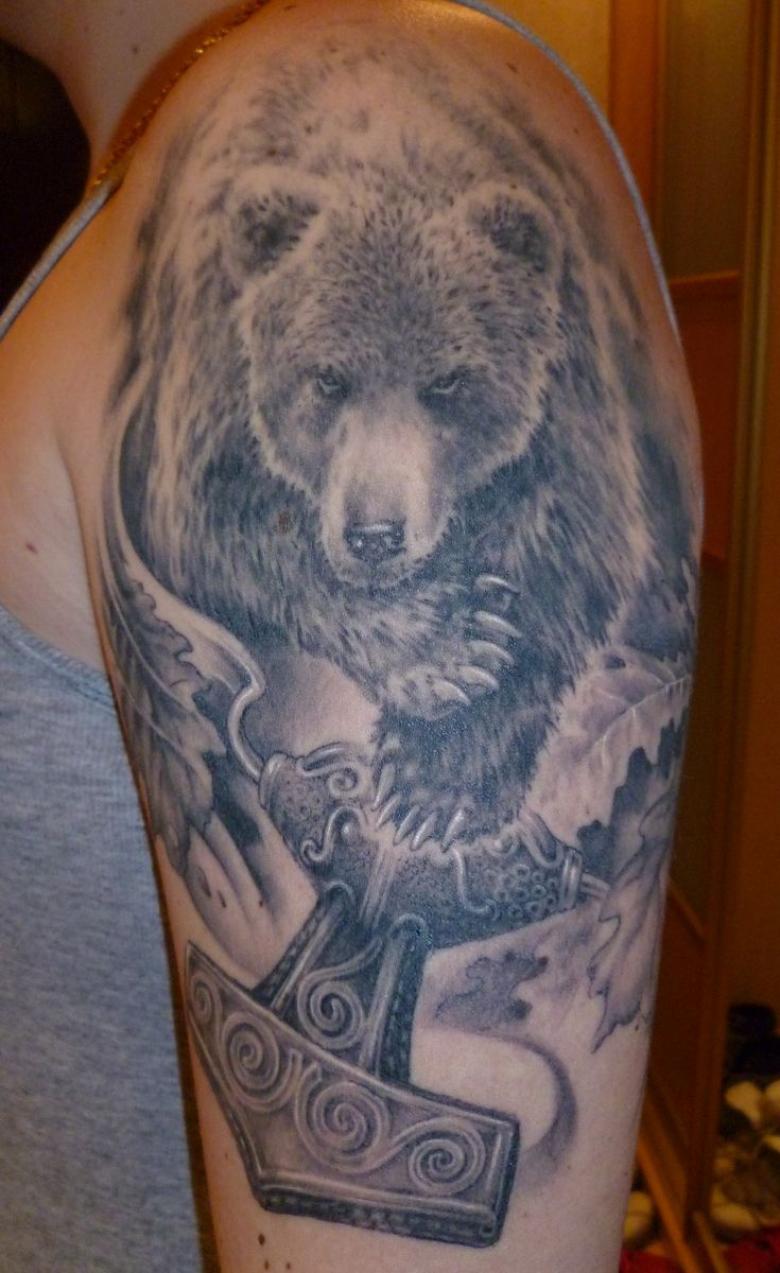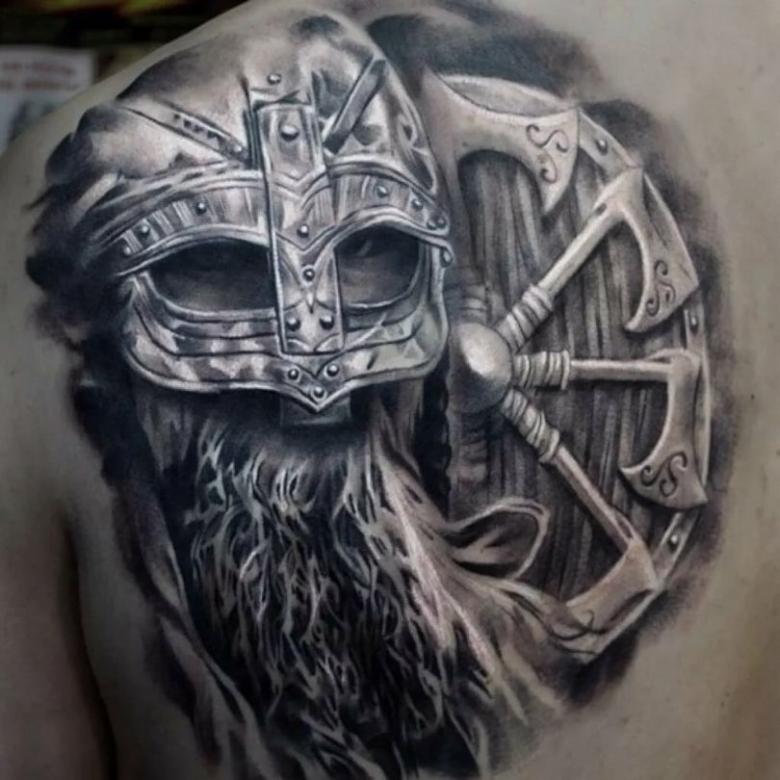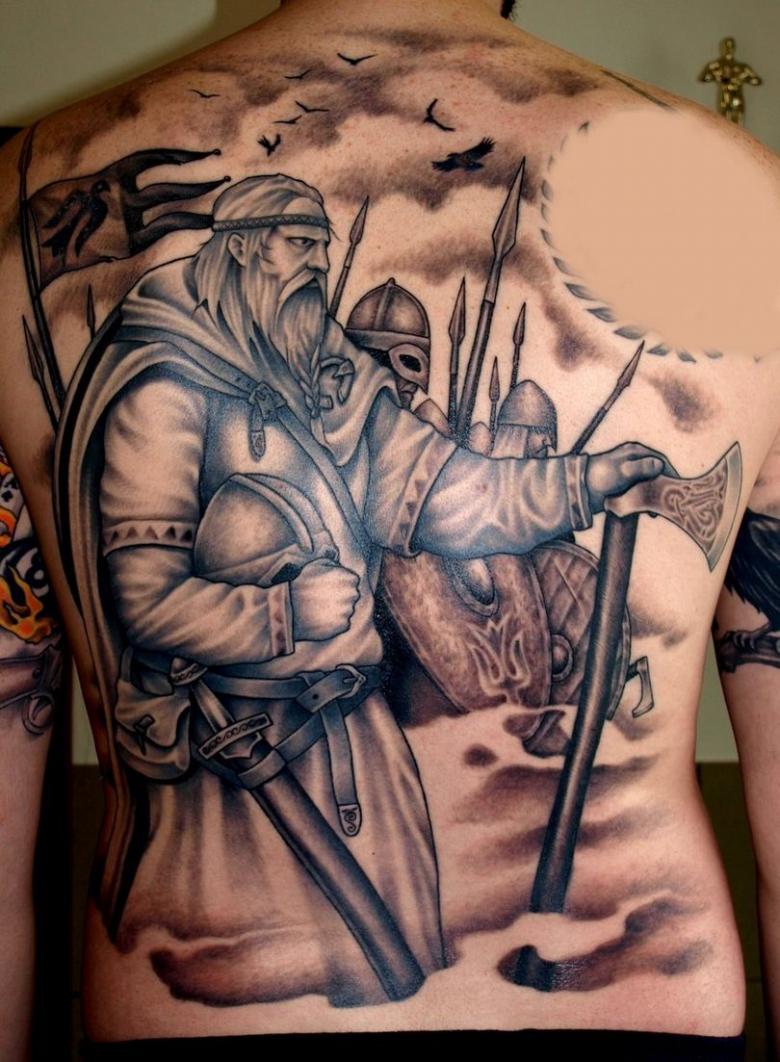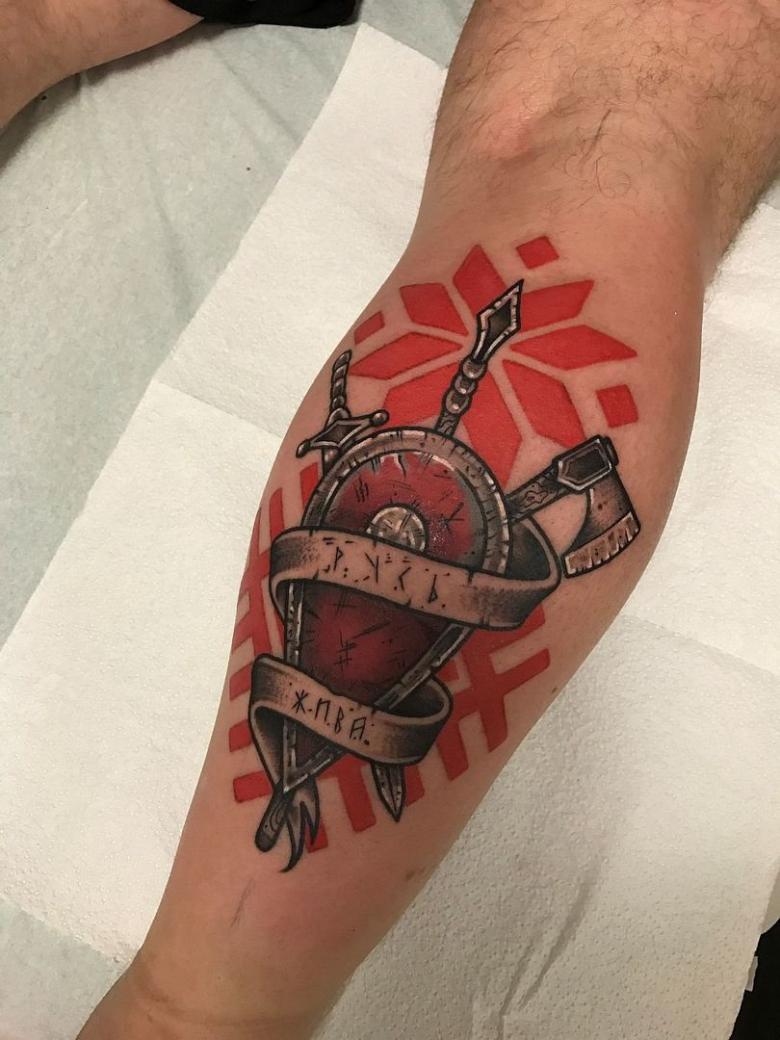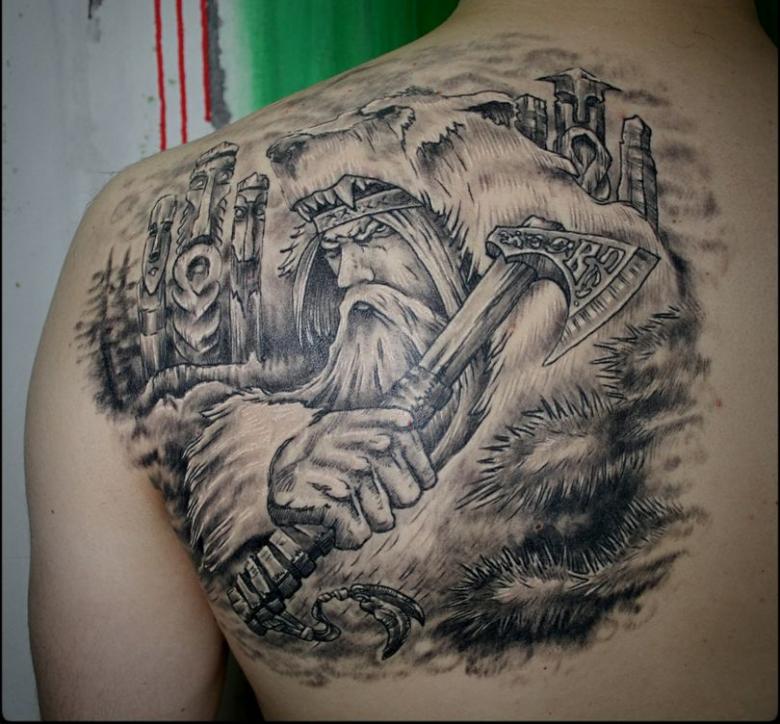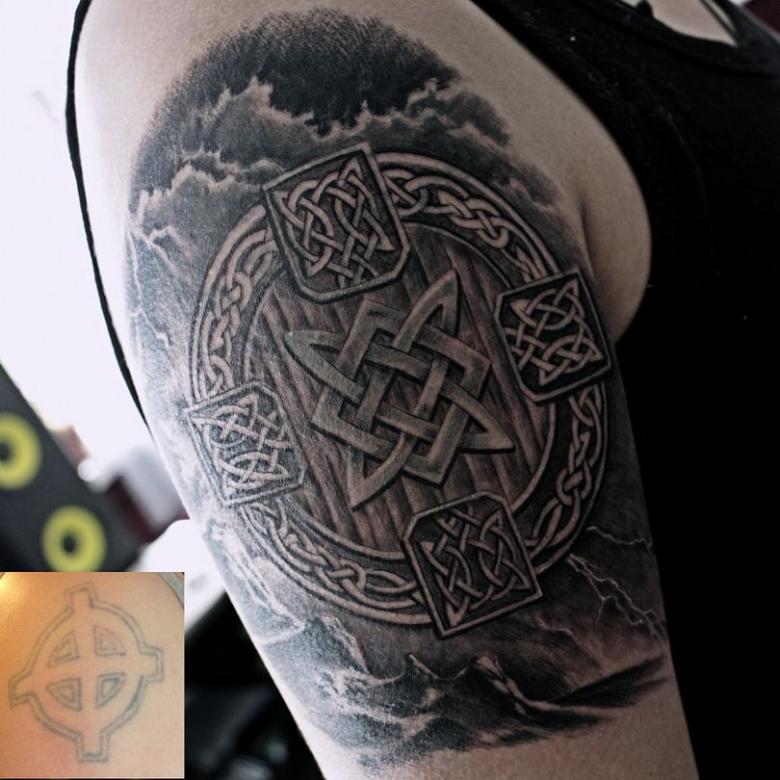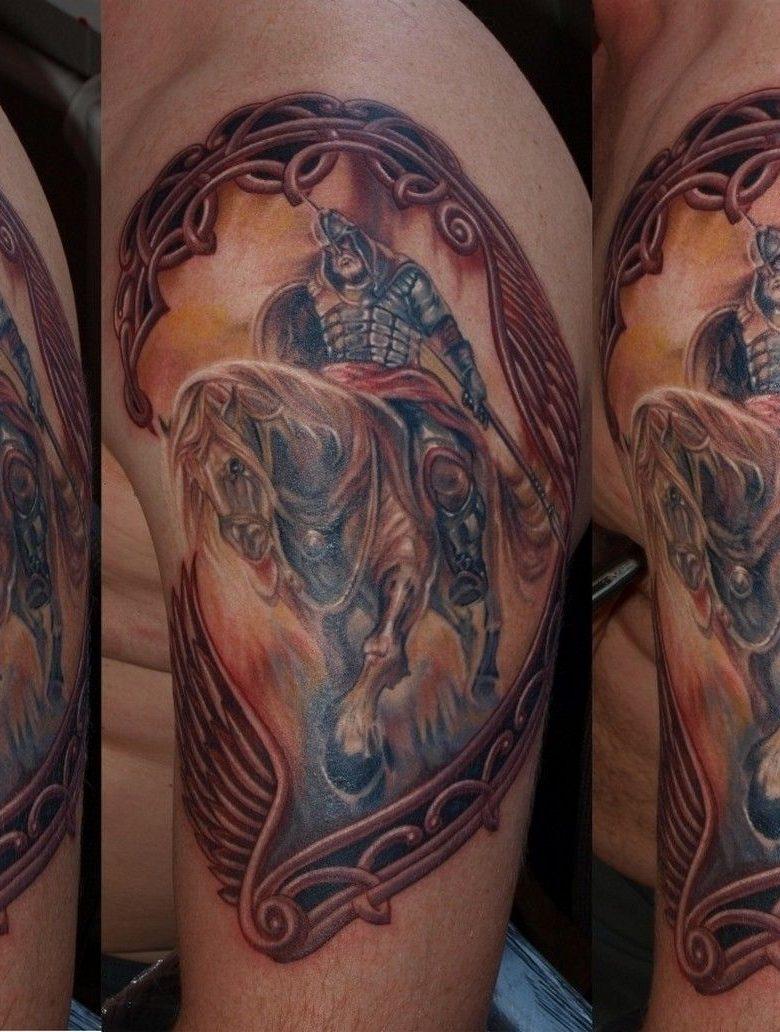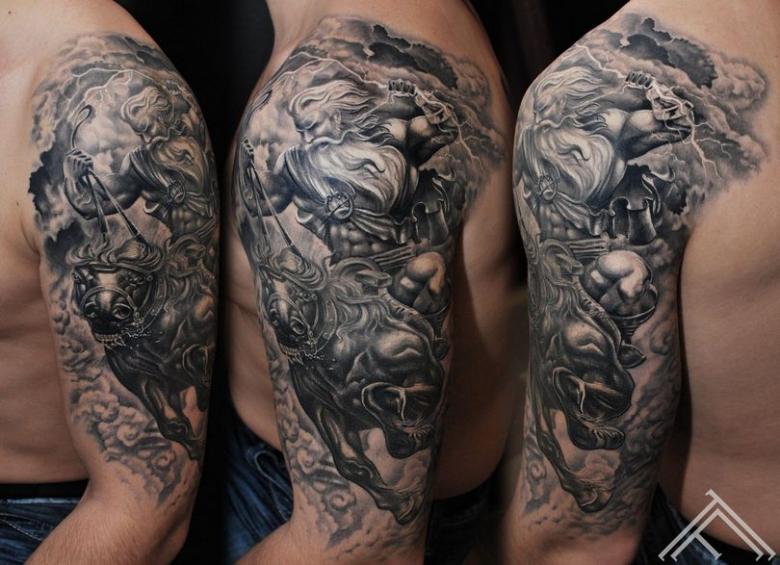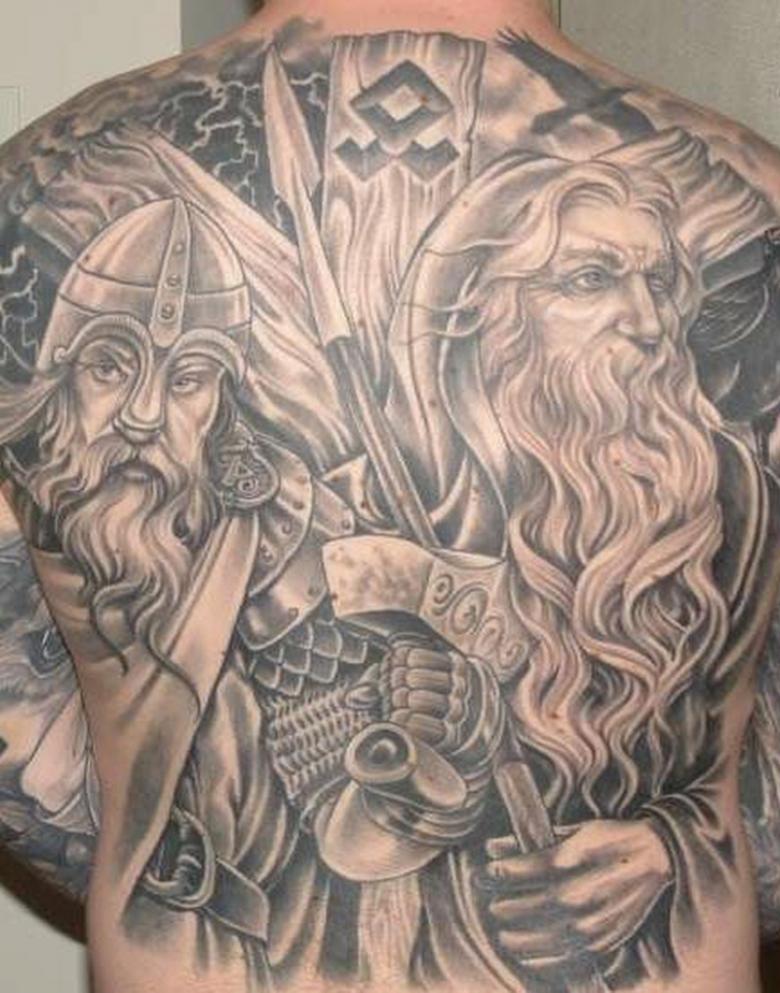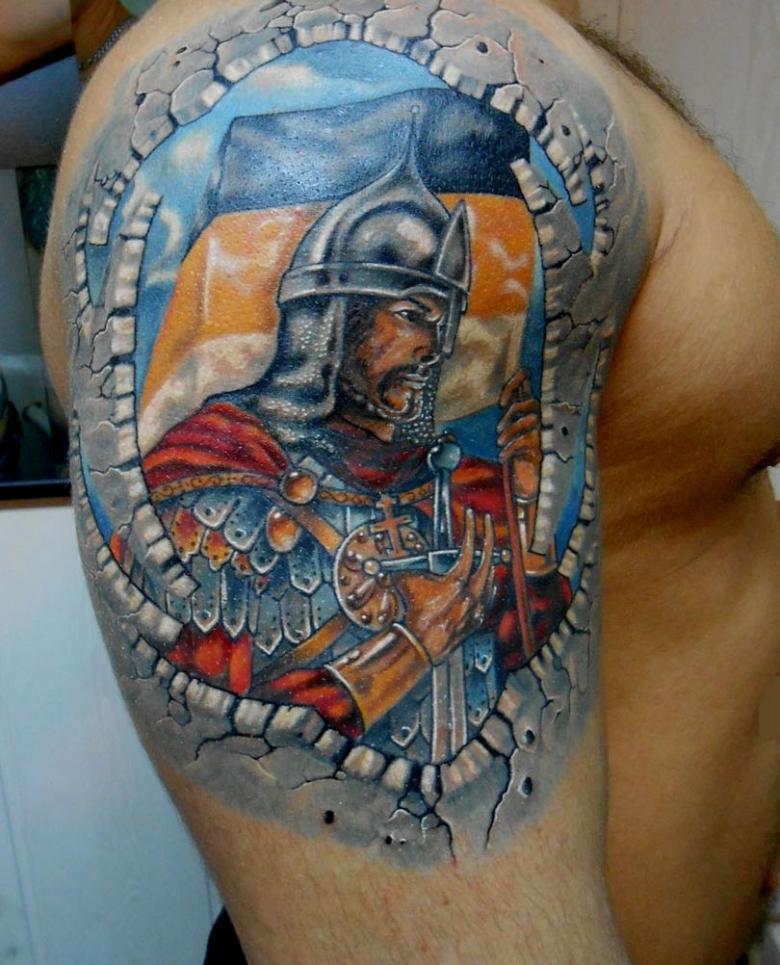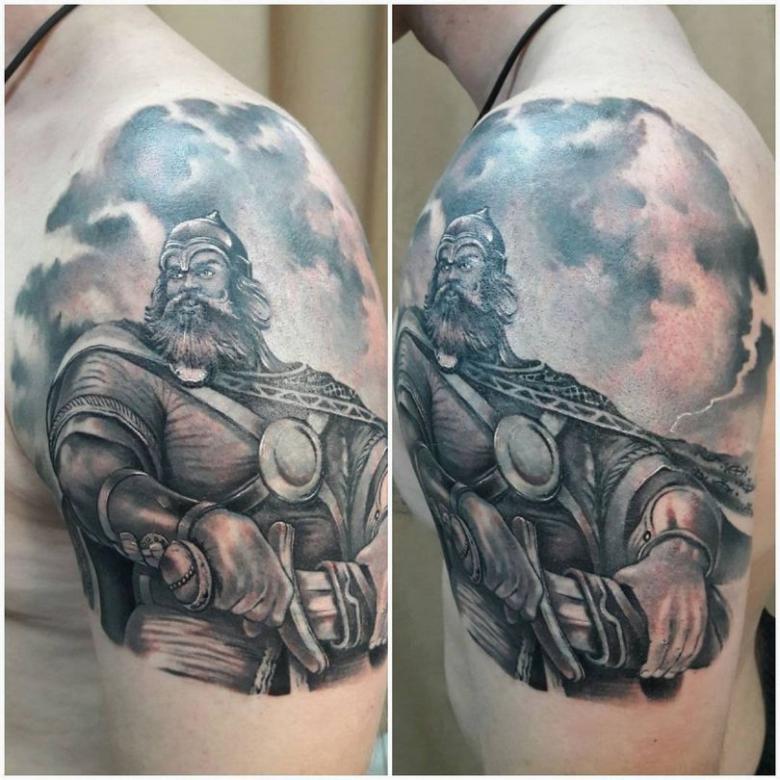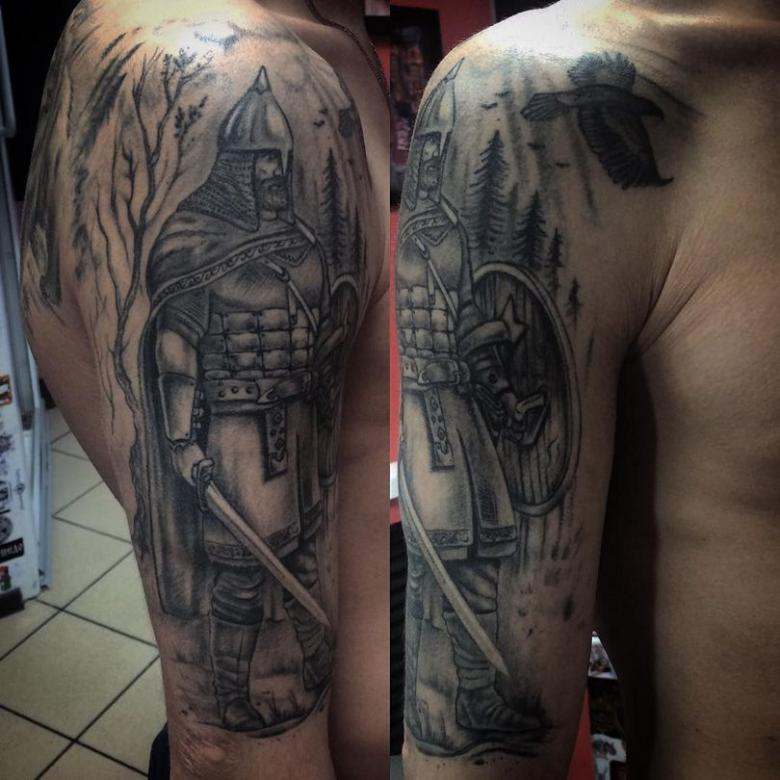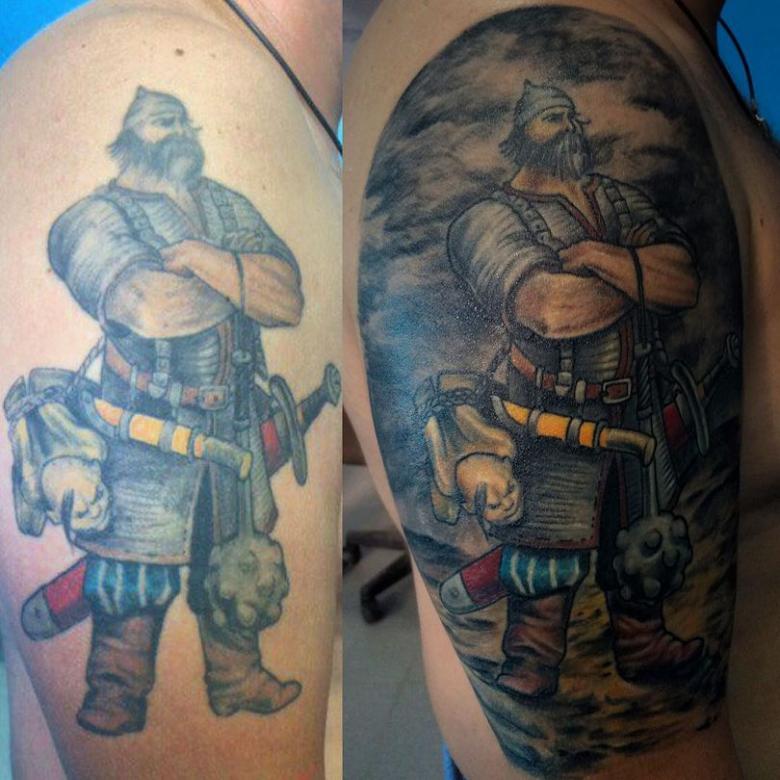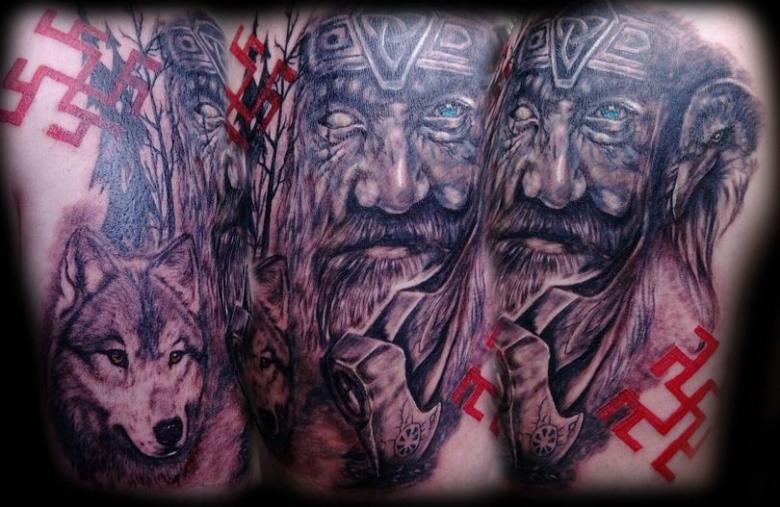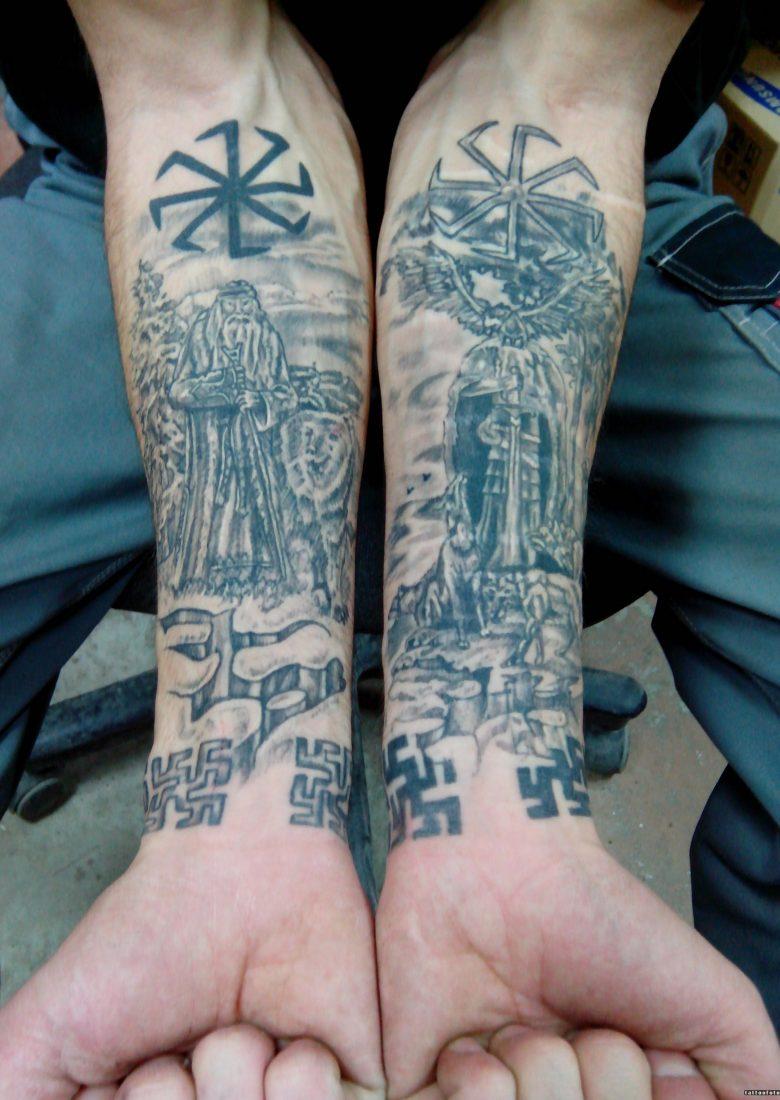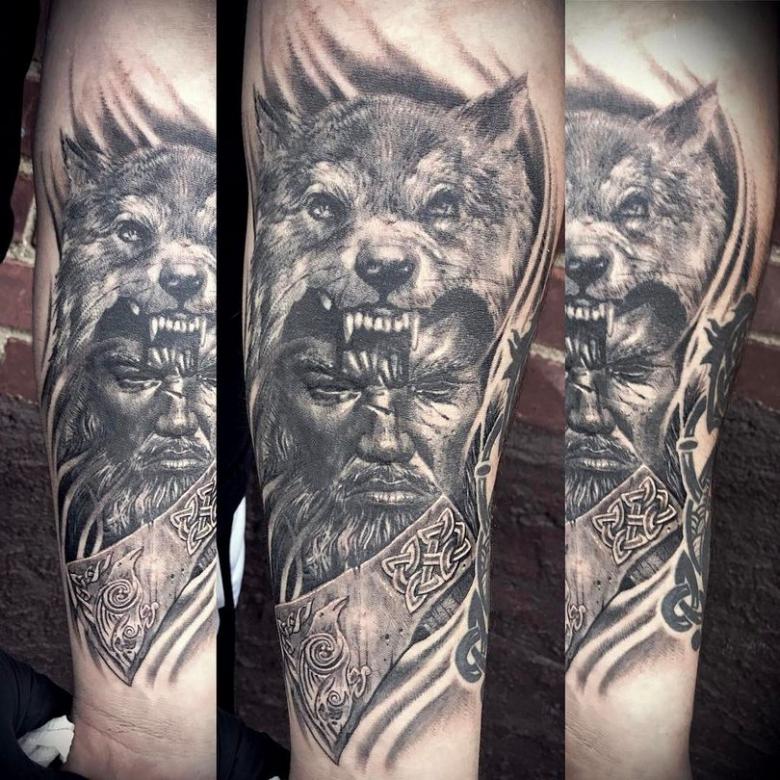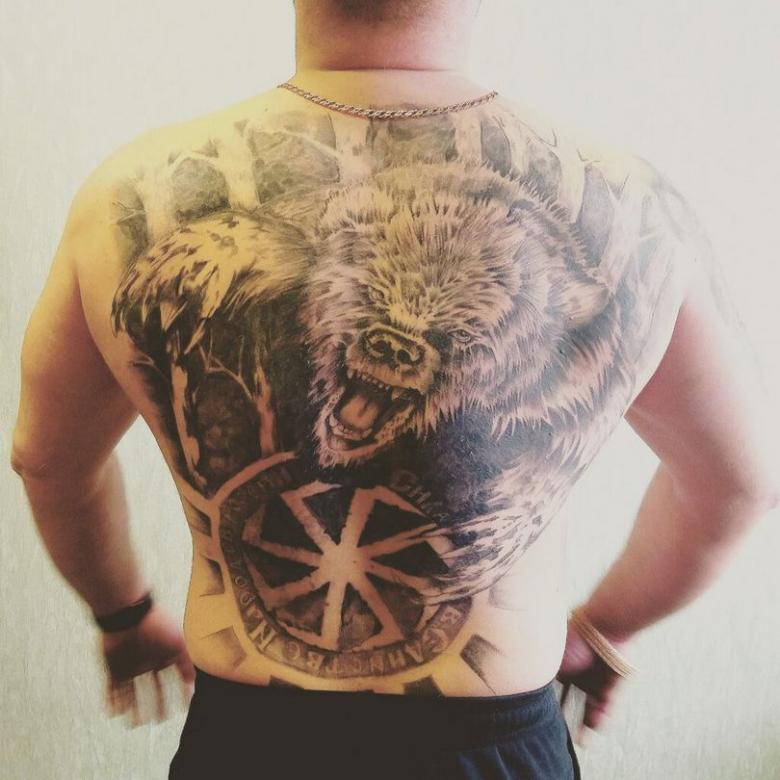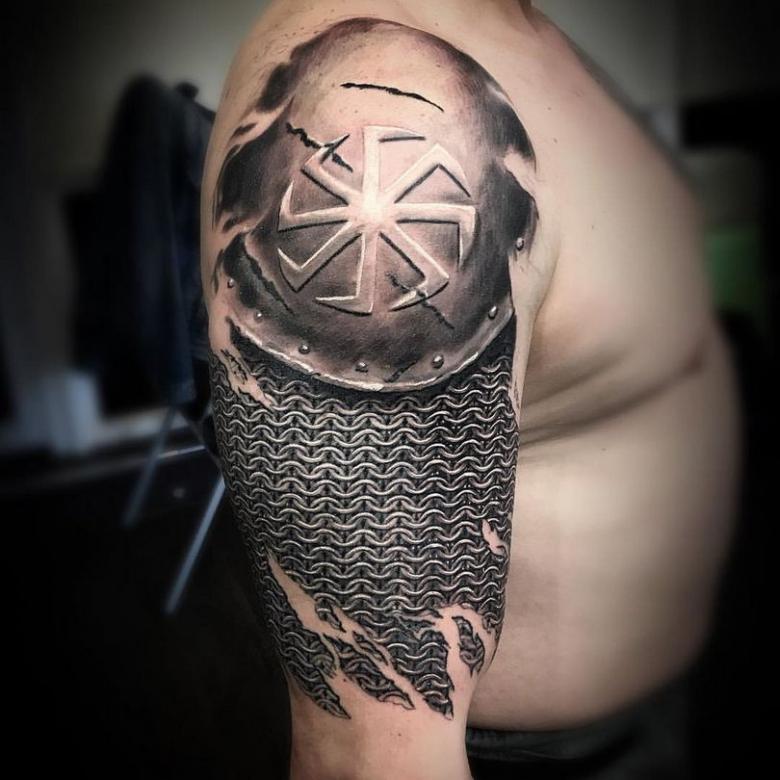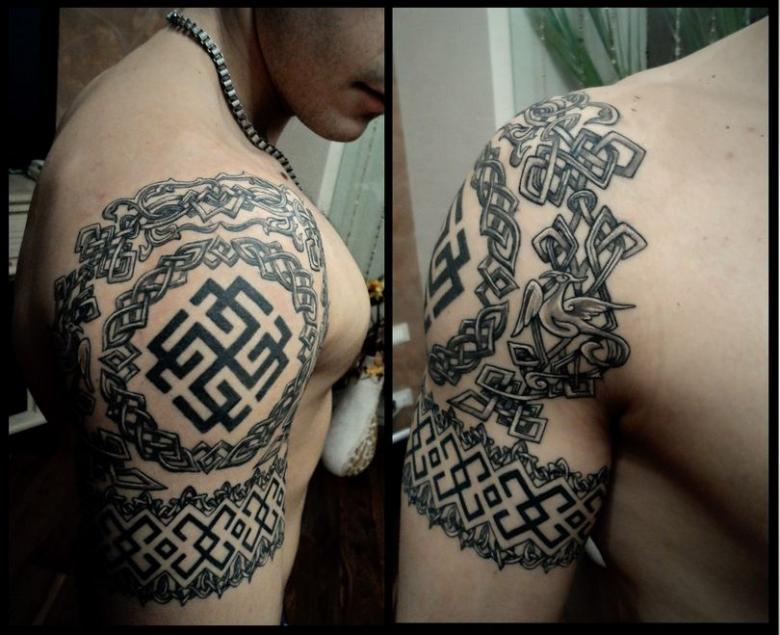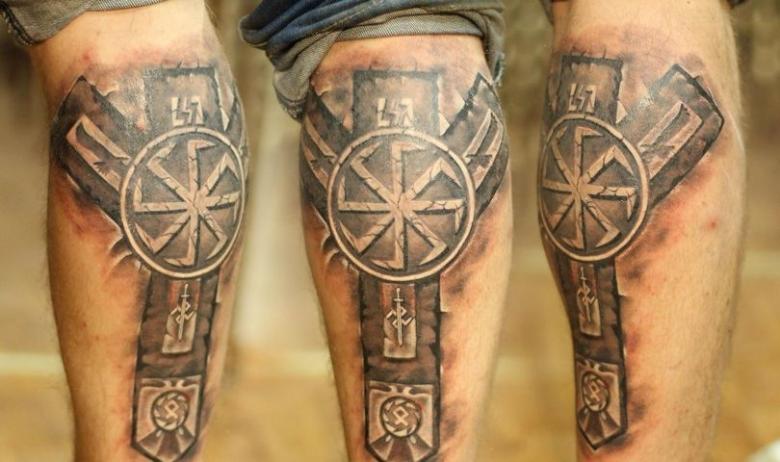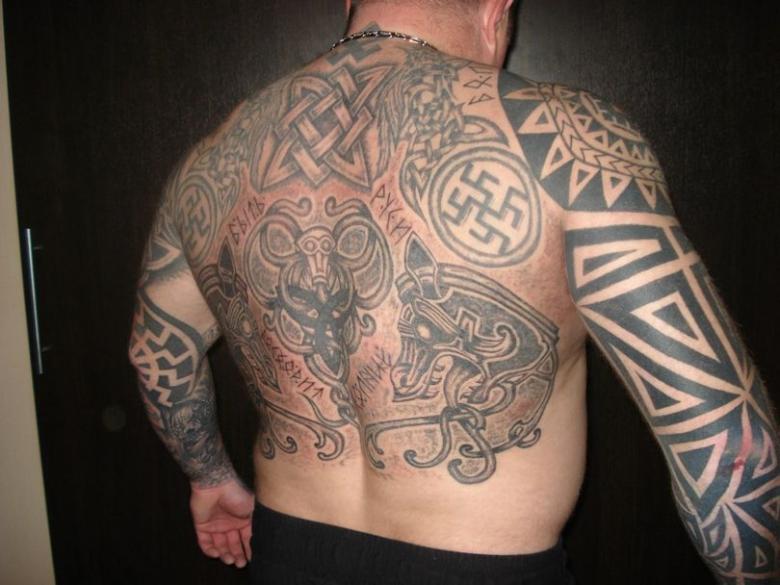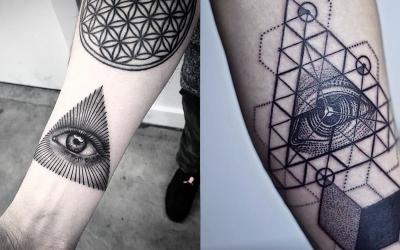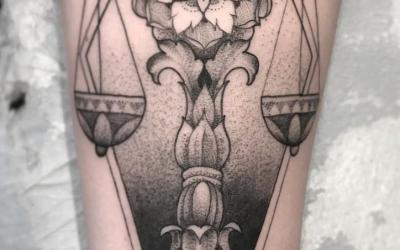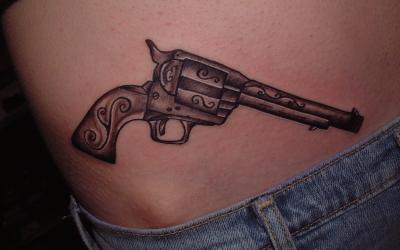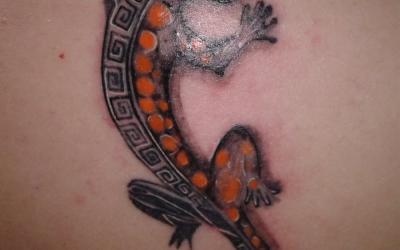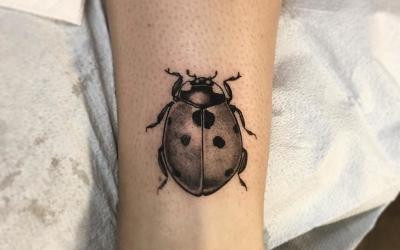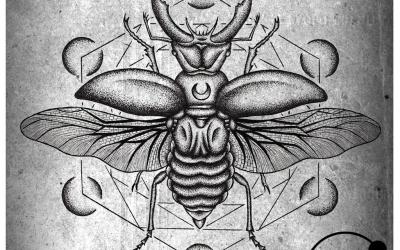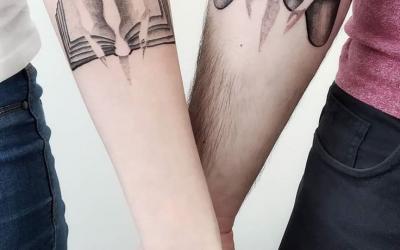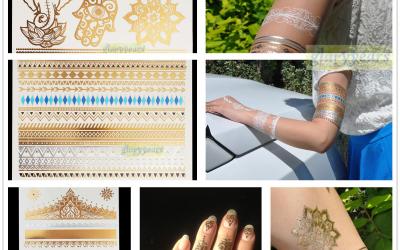Description of tattoo Russia for men and girls, meaning, inspiring sketches, photo ideas
Slavic tattoos are becoming more and more popular. The culture of our ancestors contains a large number of symbols and images, endowed by people with magical and protective properties.
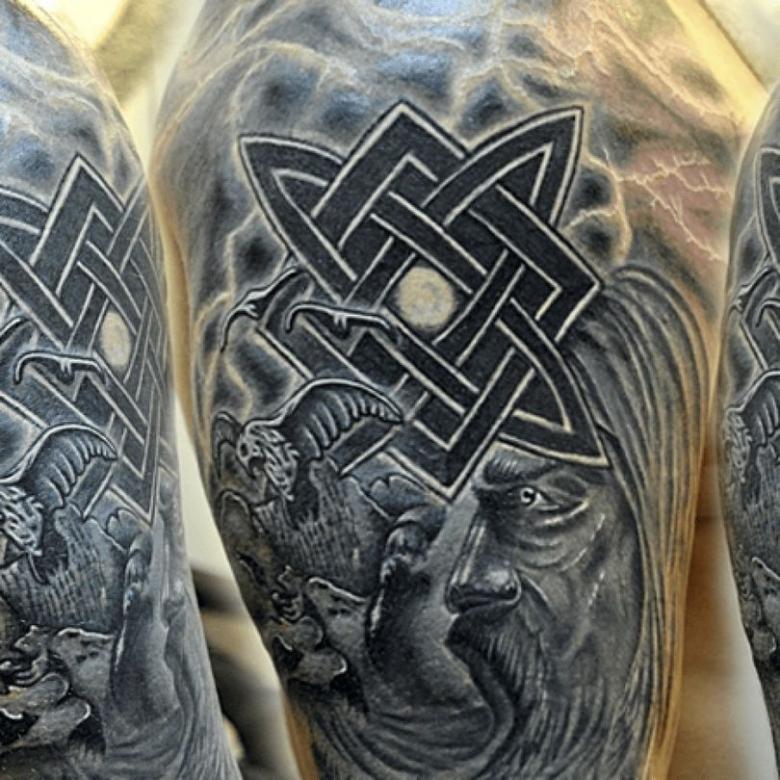
There are many tattoos of Slavic subjects. The main ones are various symbols, images of gods, national ornaments. The pictures of plants or animals inhabiting the Slavic territories also belong to this style. These pictures are not just body ornaments. They have a powerful energy, are important and are considered amulets. Usually they are worn by people who are fond of Slavic culture.

Originally all Slavs were pagans and used tattoos to refer to the gods. For tattoos of Russia are characteristic drawings of representatives of fauna and flora. Such images marked the features available to their bearer. For example, if a person had excellent eyesight, he was given an illustration of an eagle. For the fast ones, the picture of a hare was used, and for the criminals a picture of beasts of prey was given.
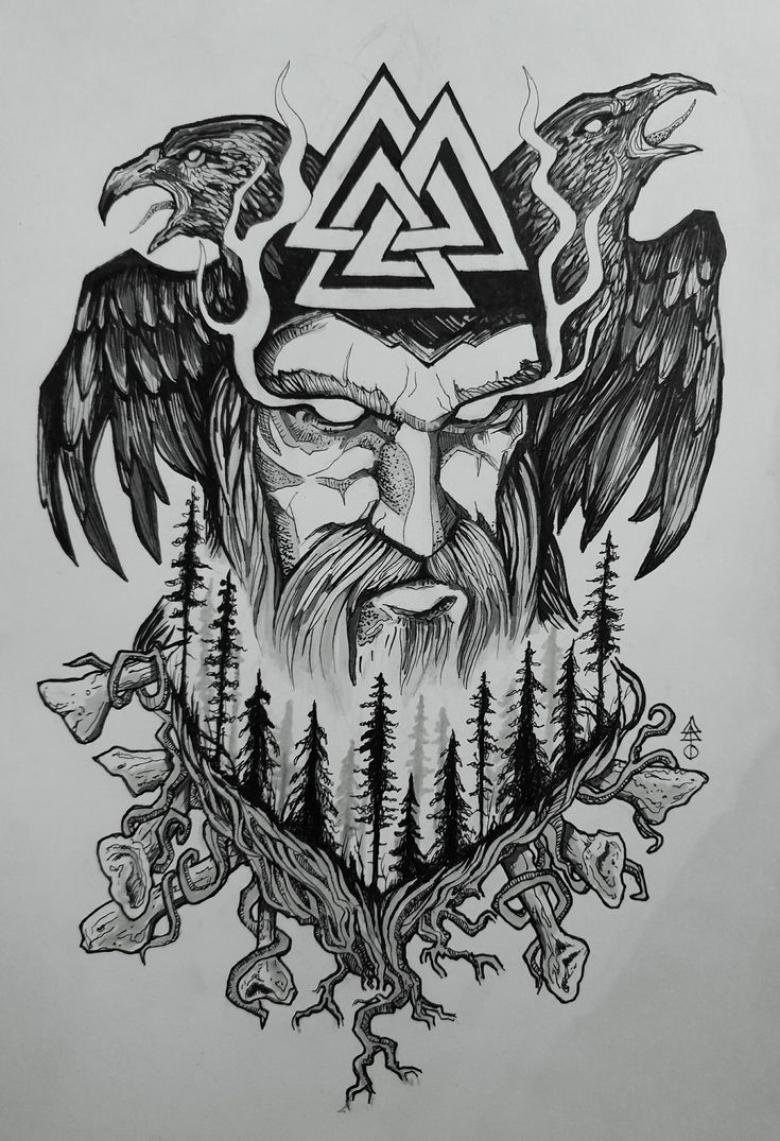
With the advent of Christianity in Russia to tattoos began to treat negatively. The clergy believed that these images are barbaric and serve to distance them from God. Despite the protests, Russian Christians continued to wear Slavic body art. At the same time, the church was in favor of illustrations that promoted faith in God. For example, in many European countries, a drawing of a small cross was inscribed on the chest.
Tattoo Theme Russia
The images of mythical beings and various symbols were popular among the Slavs. The most famous tattoos of Russia are:
- Dragon. Had the appearance of a three-headed monster from children's folklore. Sketches of ancient tattoos often depict this creature. Sometimes illustrations are used, in which the evil dragon is pierced with a spear by Perun.
- A symbol of a tree (usually a picture of oak). Slavs associated this plant with protection, fertility, and strength. On the body were printed whole landscapes with oak. Birds and animals were used for accompanying details. The presence of a certain number of branches in the tattoo indicated a particular time.
- Perun - a rune for gaining strength and protection;
- Bereginya - a female rune for the storage of beauty and energy;
- Is - a symbol of life;
- Rainbow - signifying the road to higher knowledge;
- Need - rune, personification of darkness;
- Lelya - a designation associated with water, which was used for the inevitable changes.
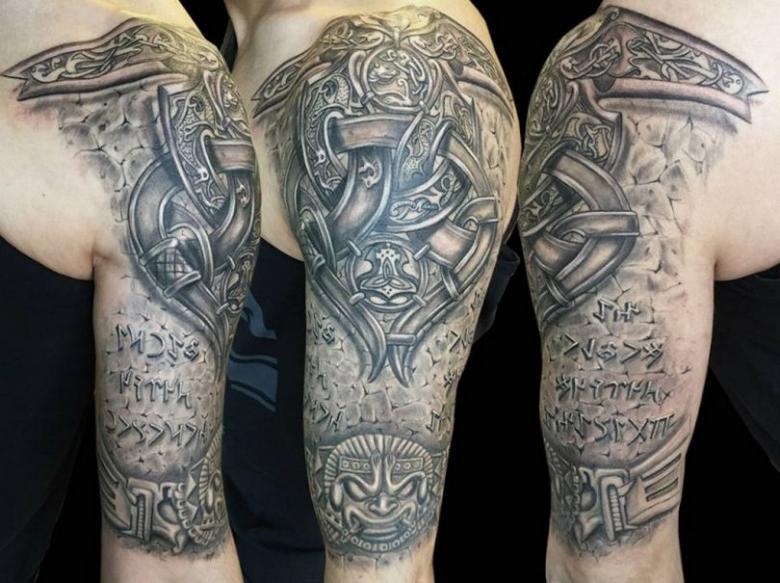
The Rus tattoos were also worn by representatives of other nations. In addition to the runes, amulets were often used. Their purpose was considered the protection of the owner. A circle crossed by several lines, representing Perun, was the most common. After all, he called the forces of this deity to protect the wearer.
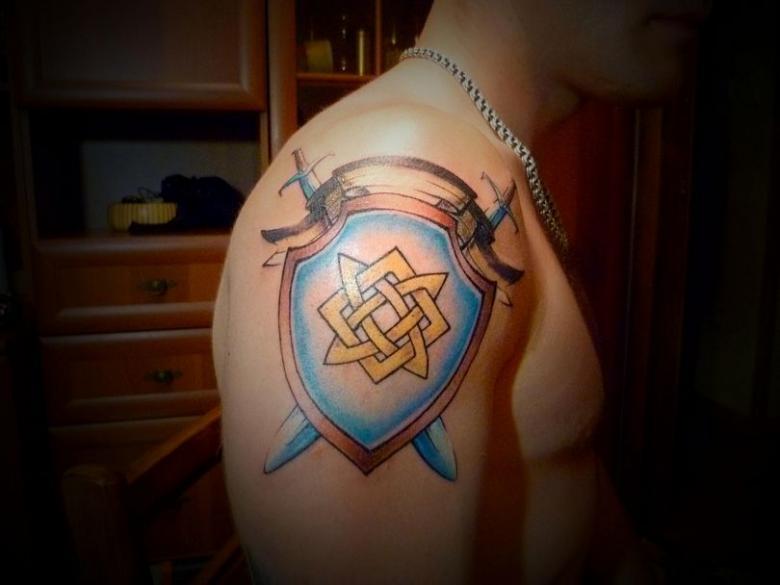
The Ladinets amulet served to attract family understanding. In a specialized salon, you can find photos of many options for tattooing Russia. As a rule, their padding on their body indicates the presence of a person's strong national position. Such people respect the culture of their people and are fond of its history. It is not uncommon to use Slavic patterns and ornaments in tattooing.
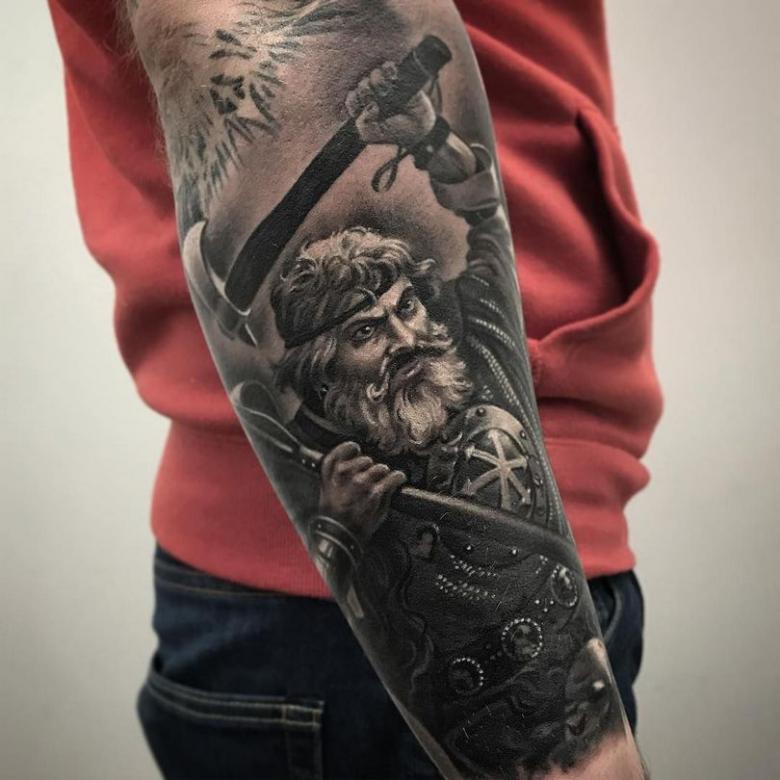
The meaning of tattoo Russia
According to historical information, the Slavs from ancient times put national drawings on their bodies. Each tattoo had a specific meaning:
- belonging to a certain community, tribe. Each settlement had its own designation, which was revered by its inhabitants;
- protection from disease. In this case, the pagan tattoo played the role of a talisman or amulet;
- illustrations of life stages, important events;
- Worship of the pagan gods.
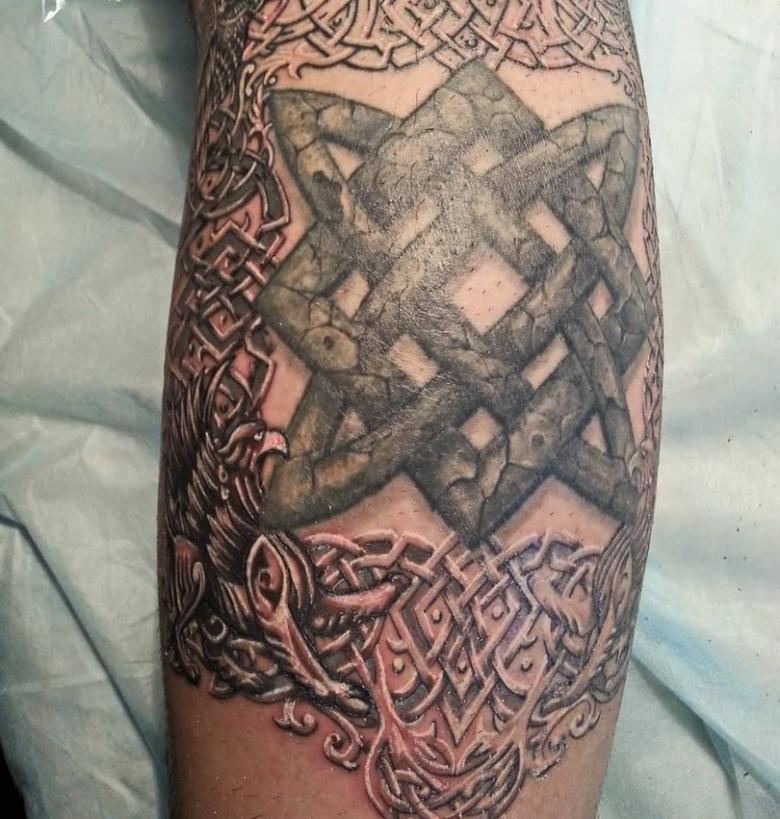
Before committing any important deed, Slavs would often put a tattoo on their bodies. Sometimes it was a criterion for the lack of resources to do what was planned. In this case people counted to execute the conceived thing according to the tattoos which had been hammered on their body.
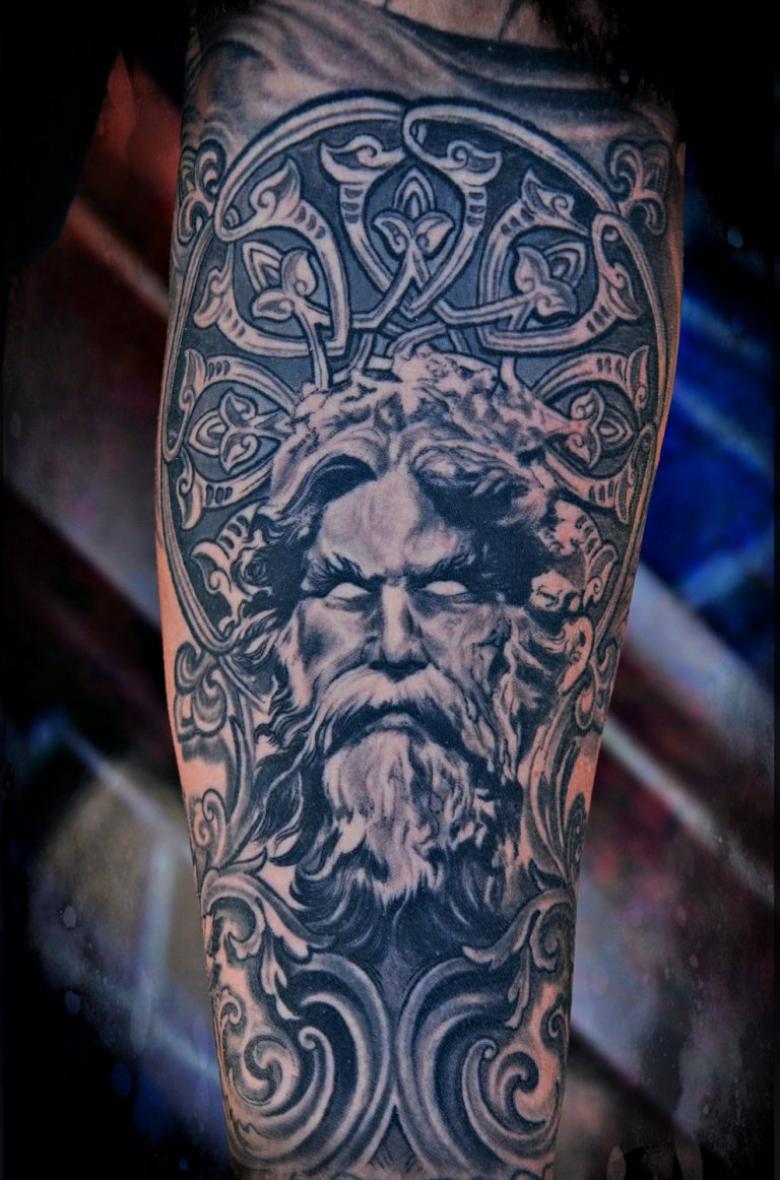
Only the magi (pagan priests) were allowed to make sketches and stick pictures on their bodies. It was explained by the existence of their esoteric knowledge. Peculiarity of Slavic tattooing history is that it was prohibited to make drawings on the body of persons who were less than 30 years old. There was a distinction between hidden tattoos and those that were performed in prominent places on the body. In the second case, the image was pricked on the neck, hands or face.
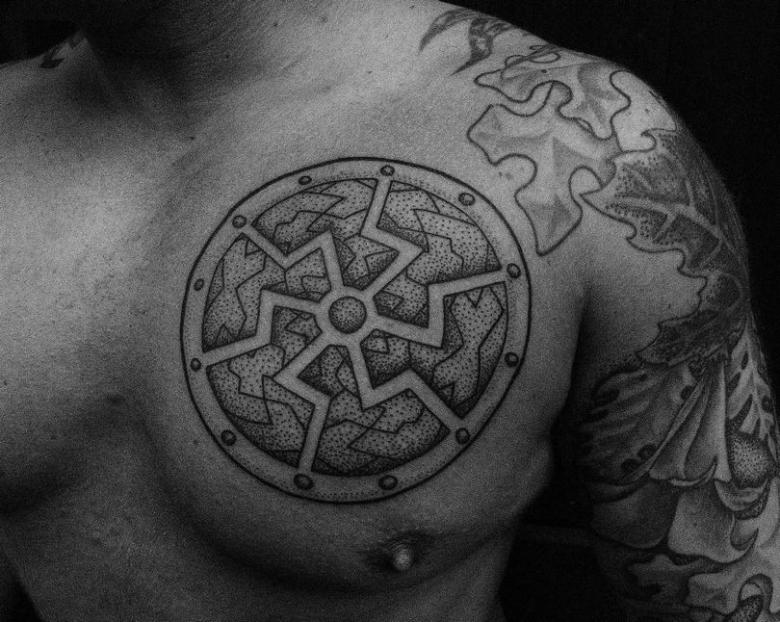
A protective tattoo
Tattoos with sacral meaning were worn on the parts of a body closed by clothes. The following Slavic amulets are popular:
- thunderer - serves to protect against hostile intentions;
- molvinets - tattooed amulet against sorcery spells;
- odolen-grass - a symbol that helps protect against disease;
- fern flower - an amulet for the discovery of spiritual forces.
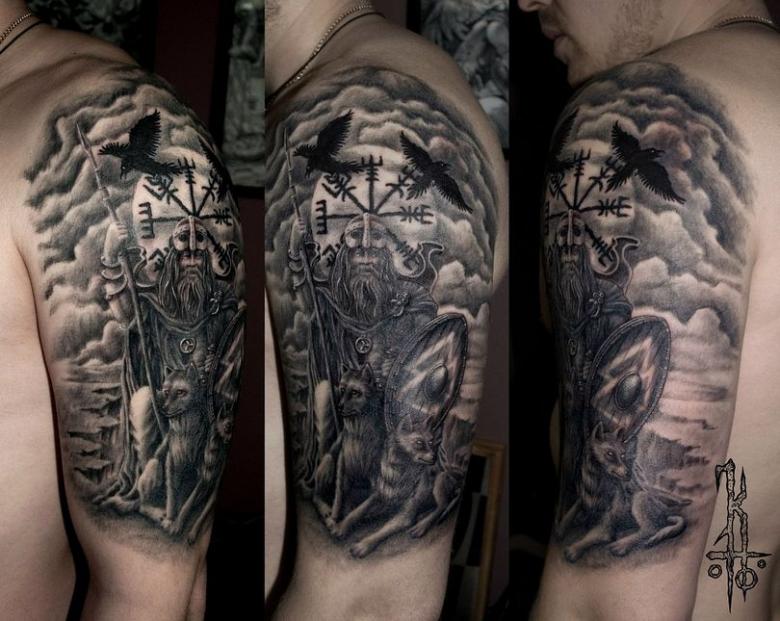
Meaning of tattoos for men and women
Tattoo Russia is not divided into male and female. Representatives of both sexes can wear the same images. At the same time, drawings of Slavic gods and designations of runes are more suitable for men. The main places to place the runes are shoulders, hands and forearms.
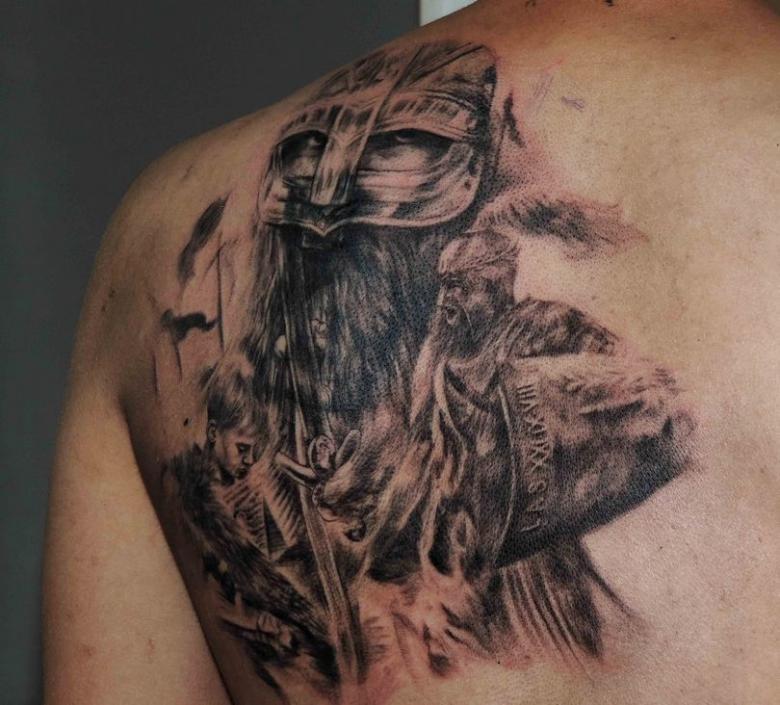
They all show courage and strength, signifying reverence for the traditions of their ancestors. Drawings with a portrait of a deity are applied to a particular part of the body. To wear them, a person must have a certain social status.
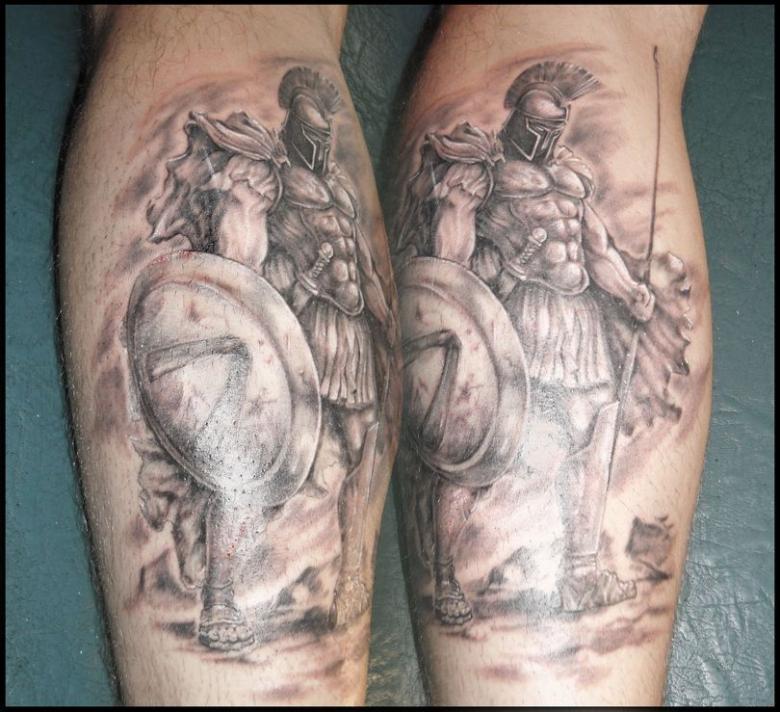
The most famous pagan gods are Perun (lord of Slavic warriors), Veles (lord of prosperity), Svarog (patron of creativity), Dajbog (patron of fertility). For women, the symbols Ladinets, Bereginya, Lada star (amulet to protect the health of a woman with her child), Eye of the Mountain and Lunnitsa are best suited.

